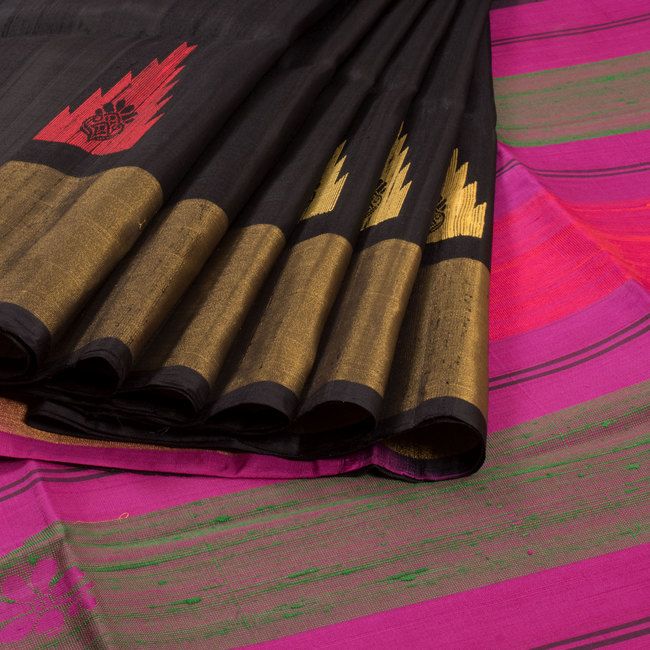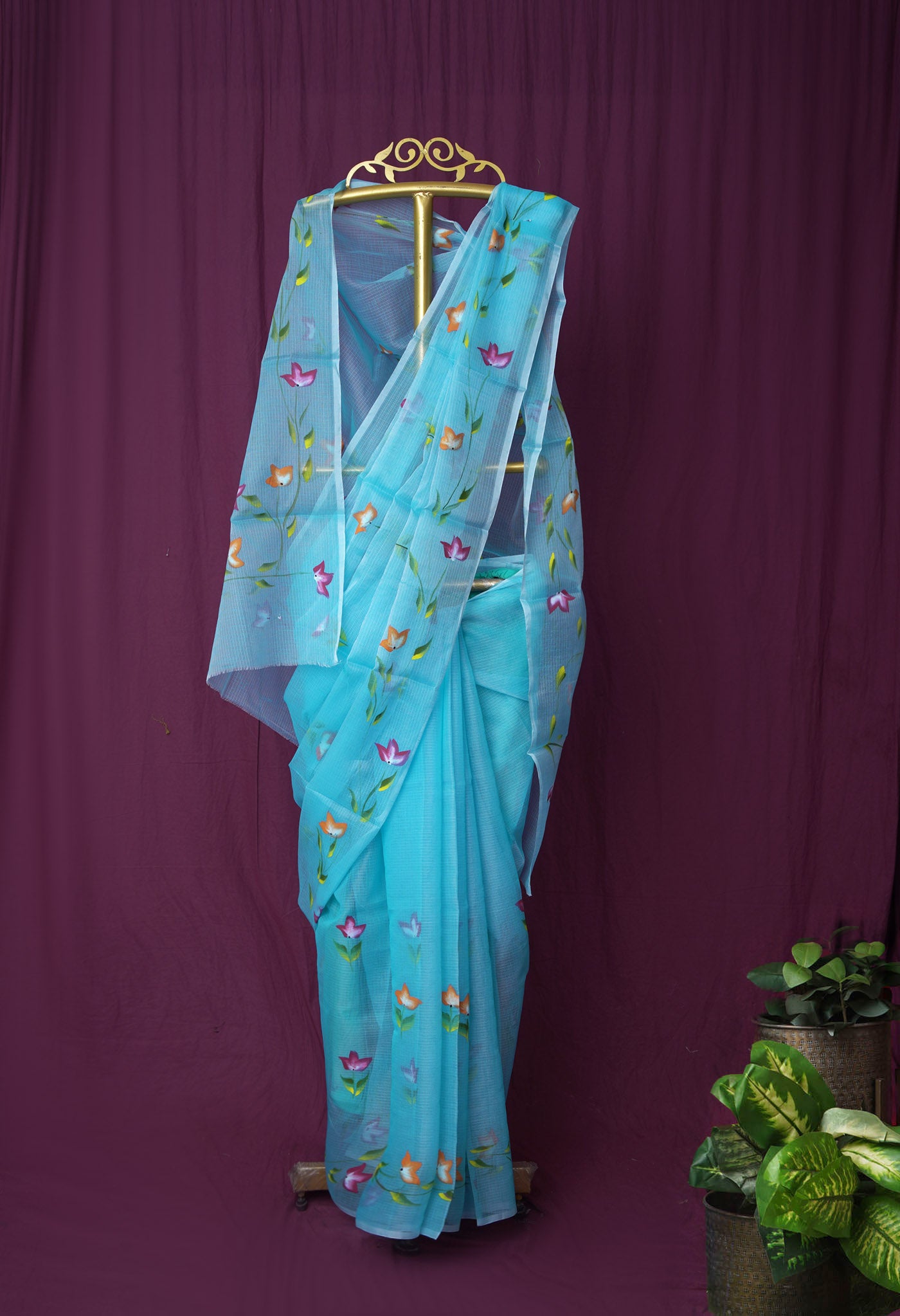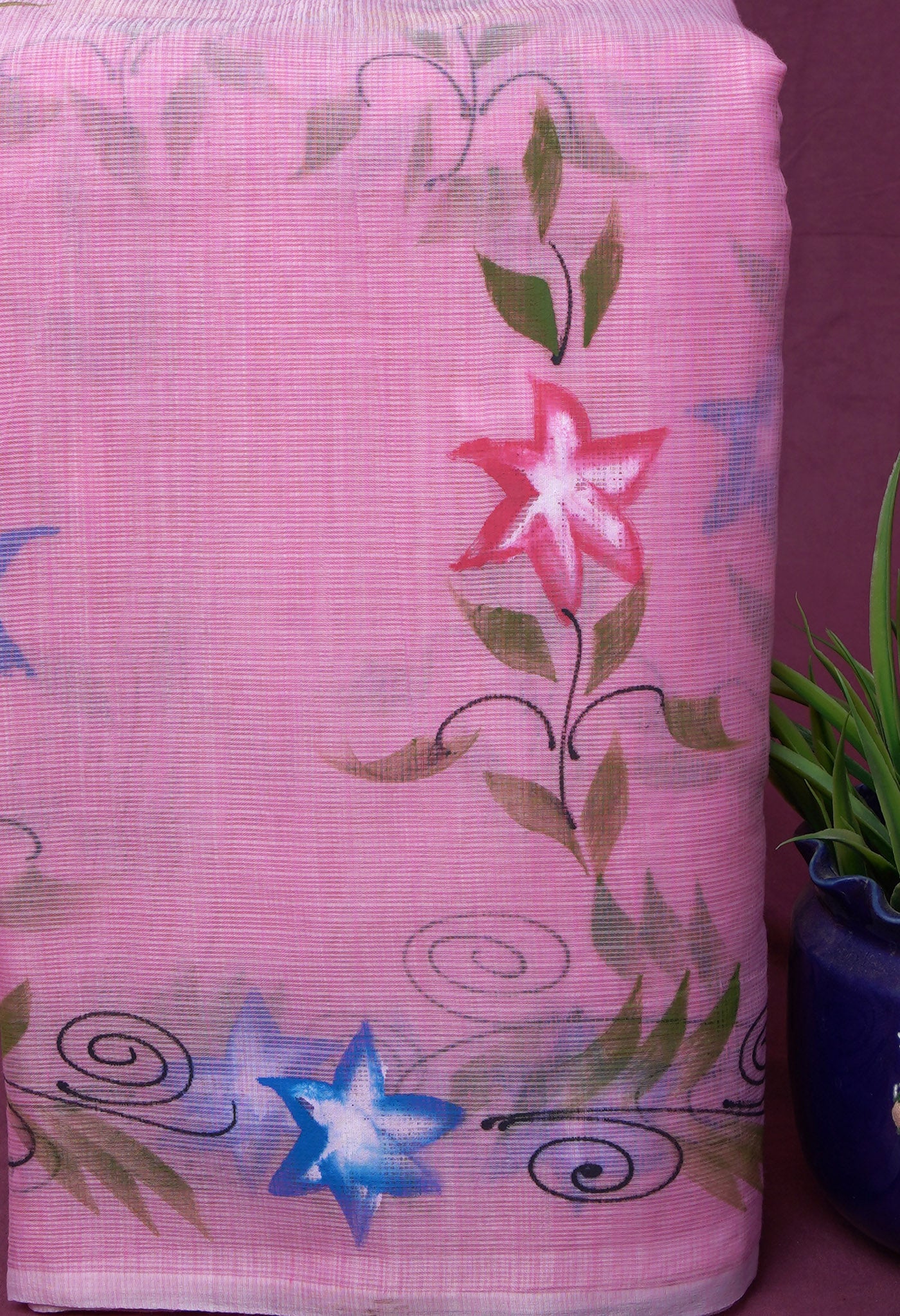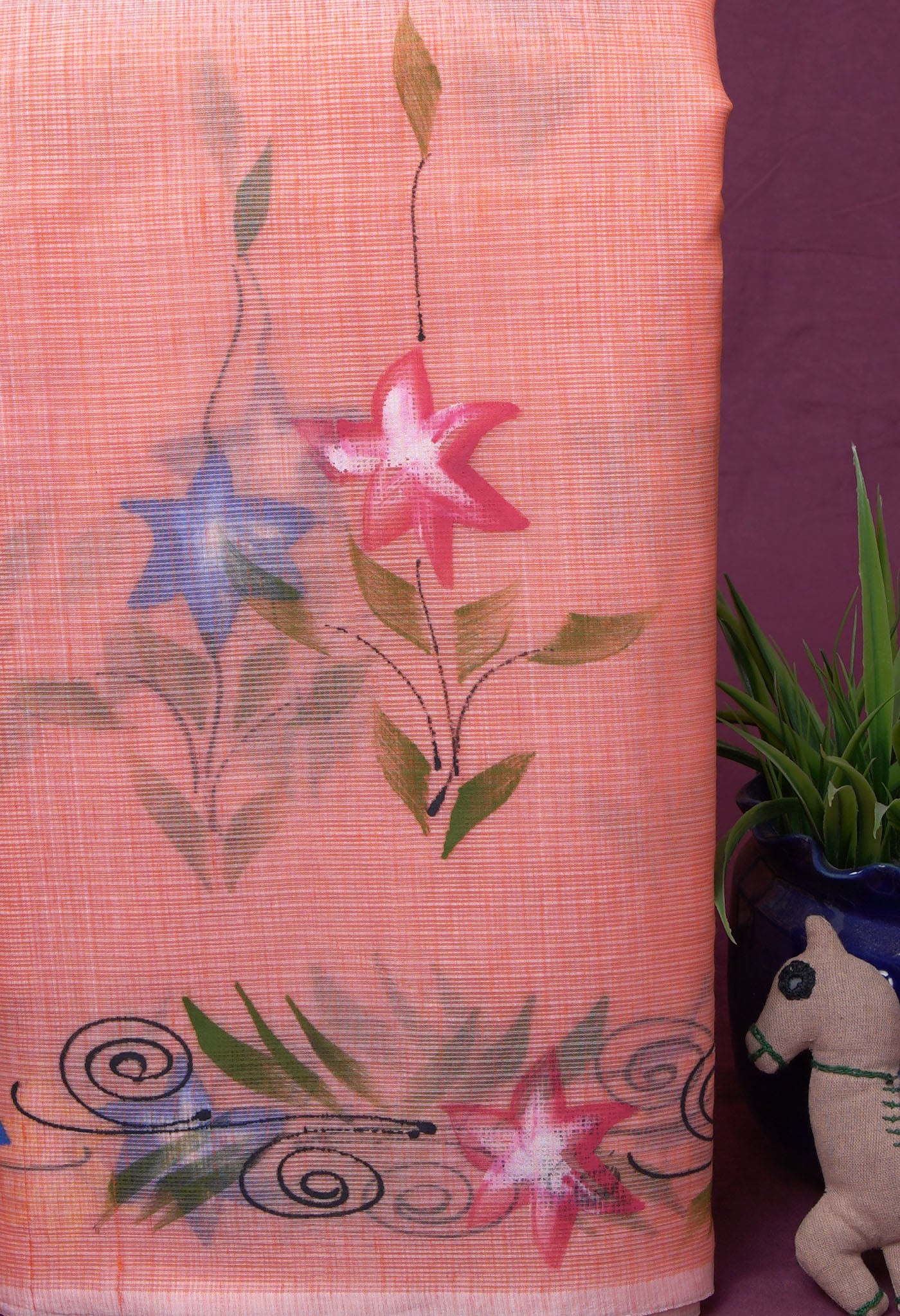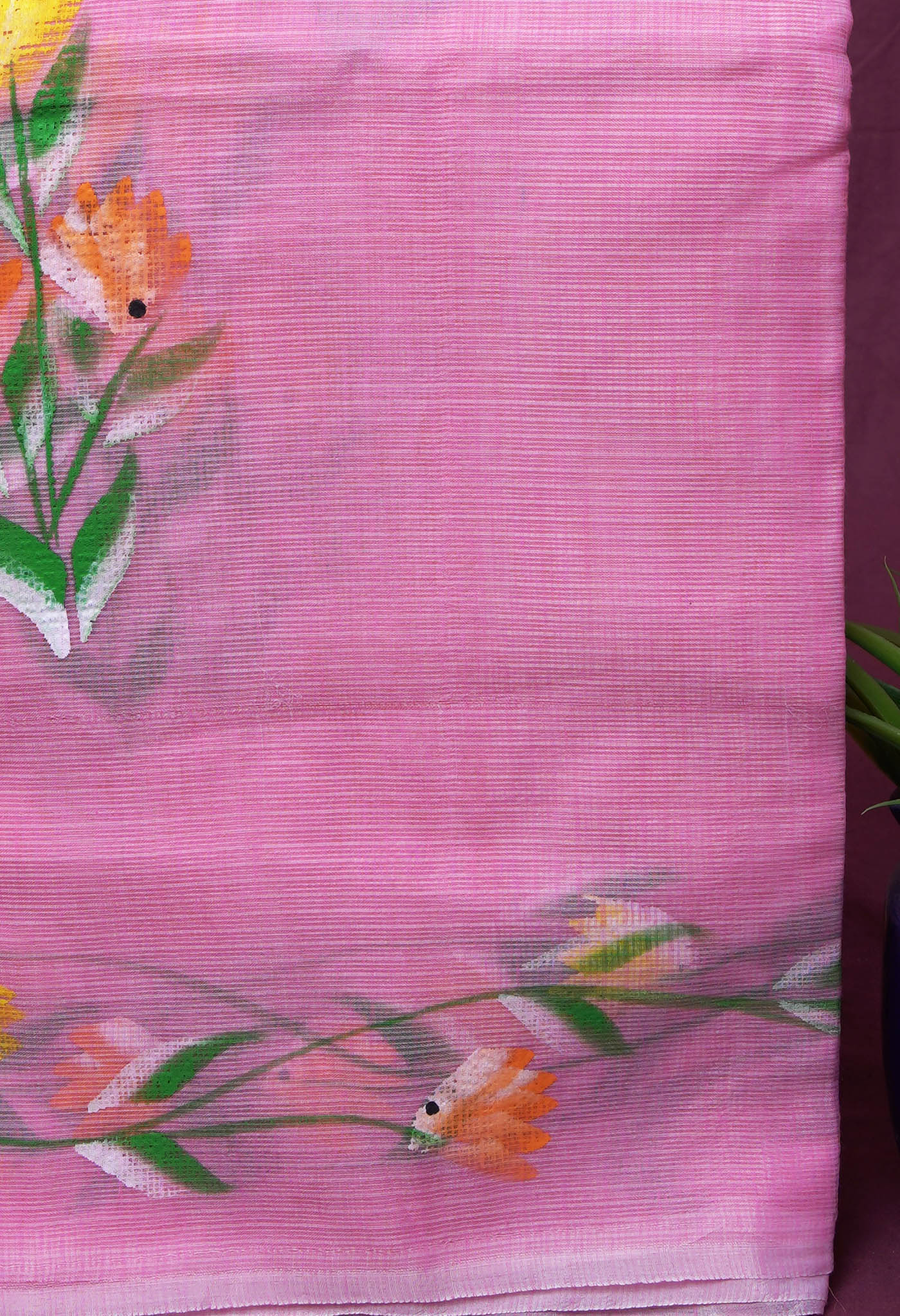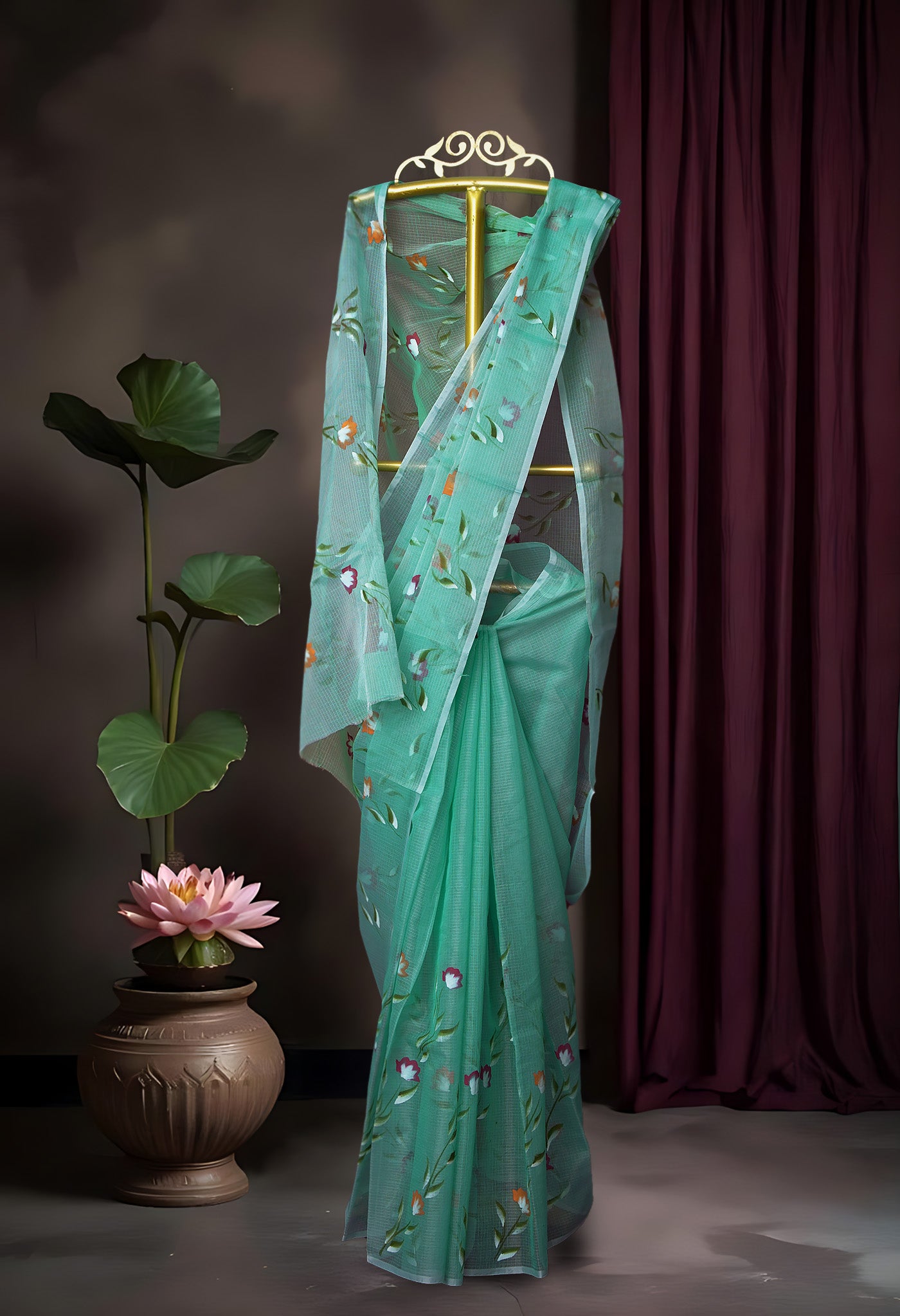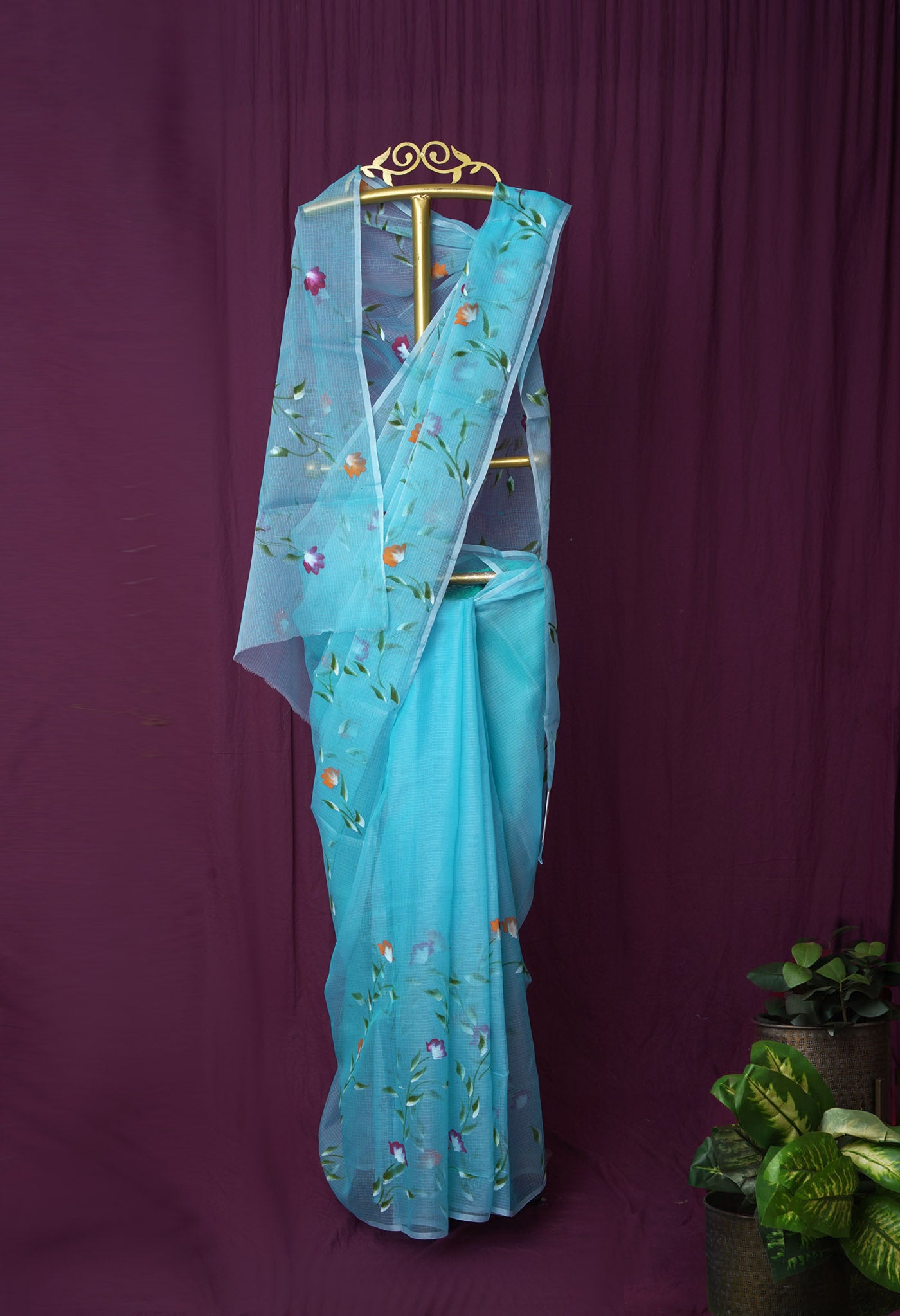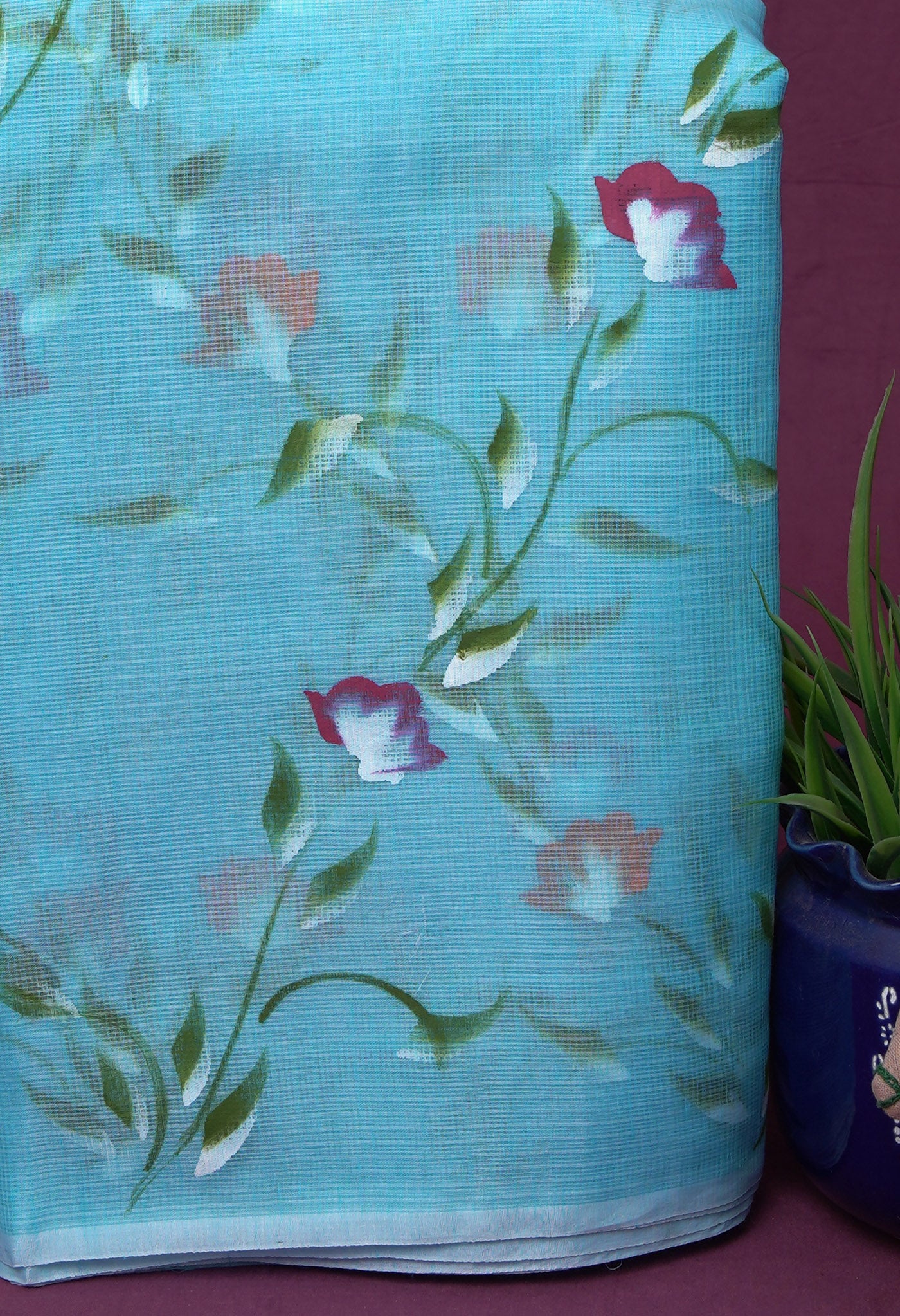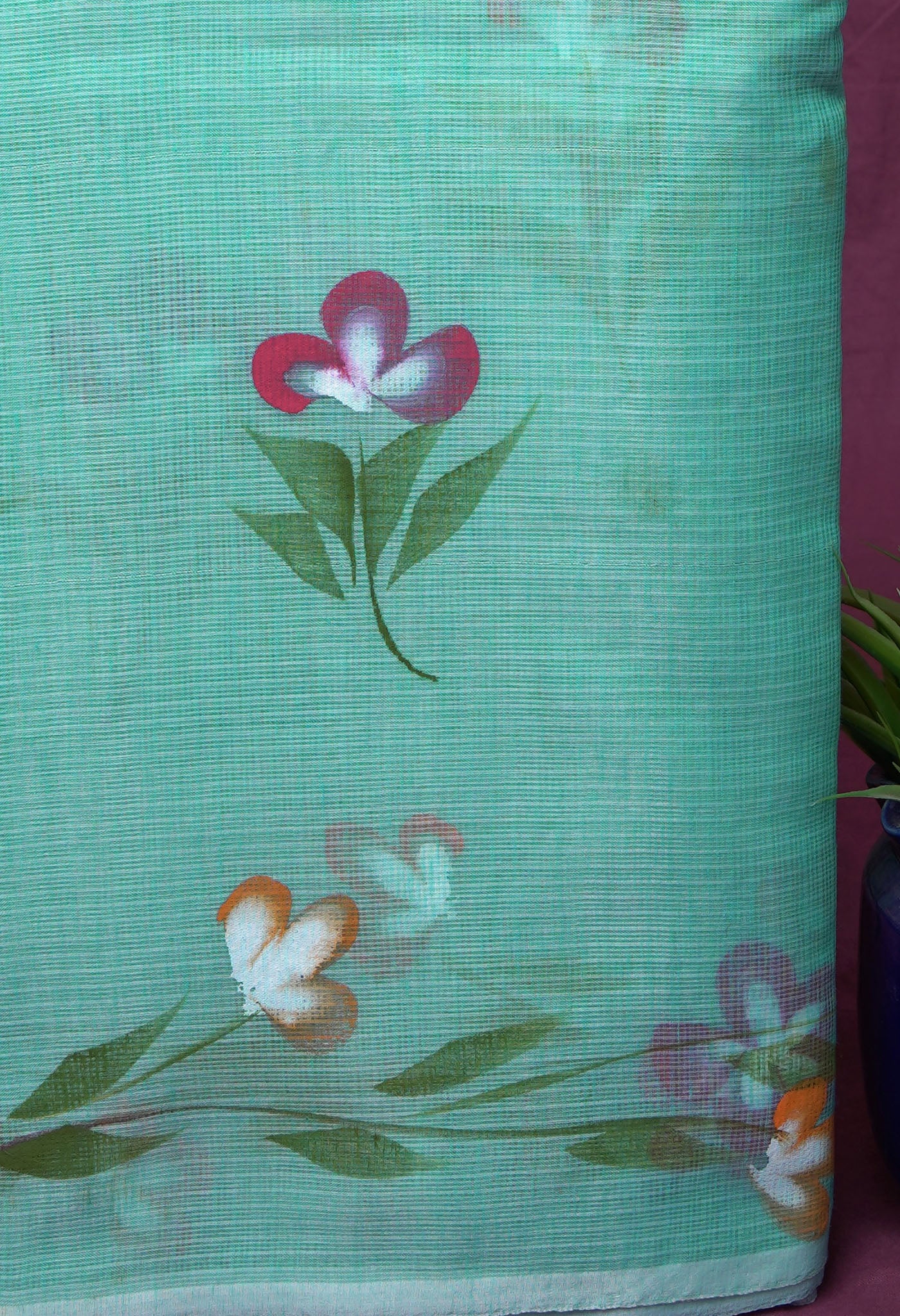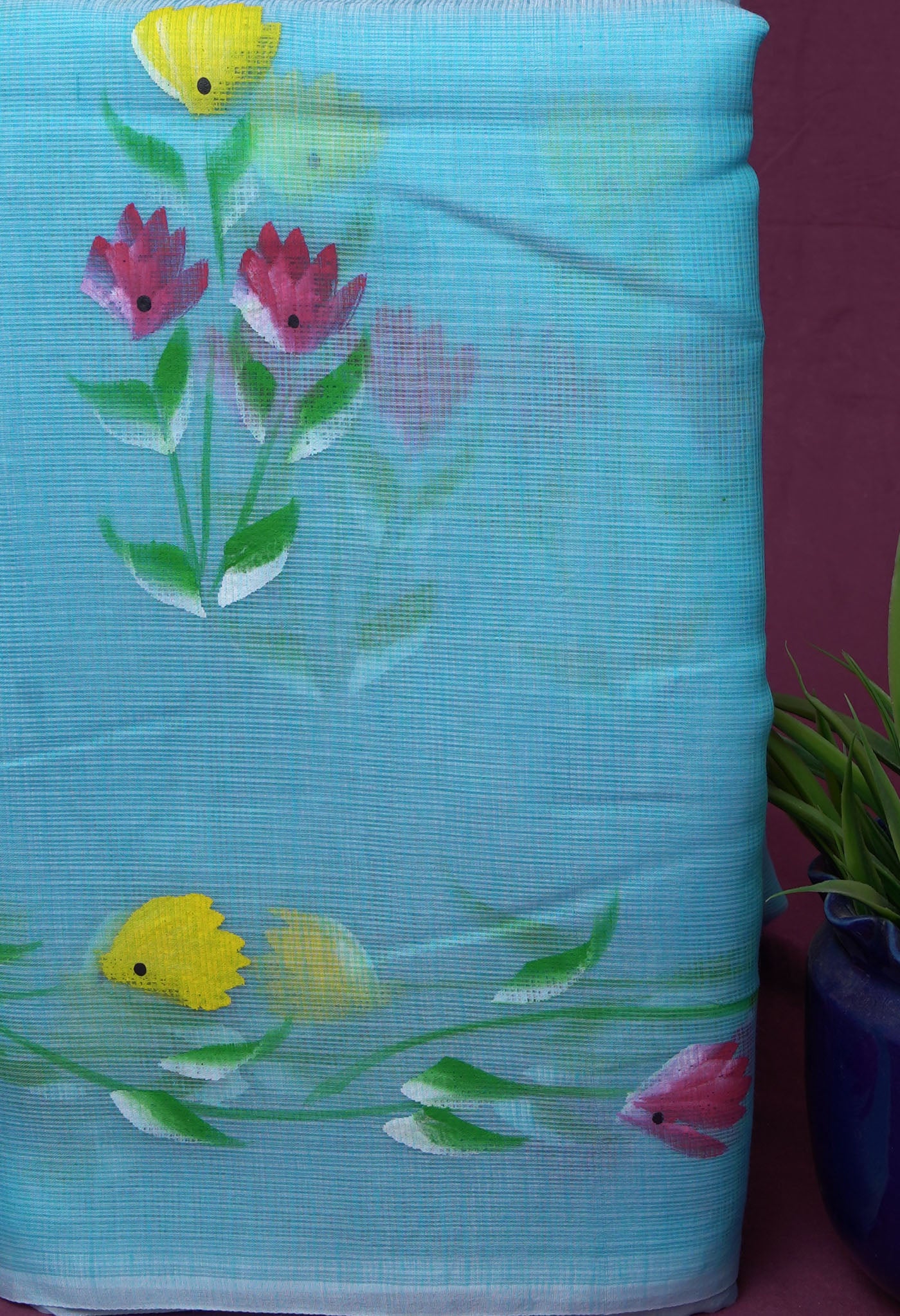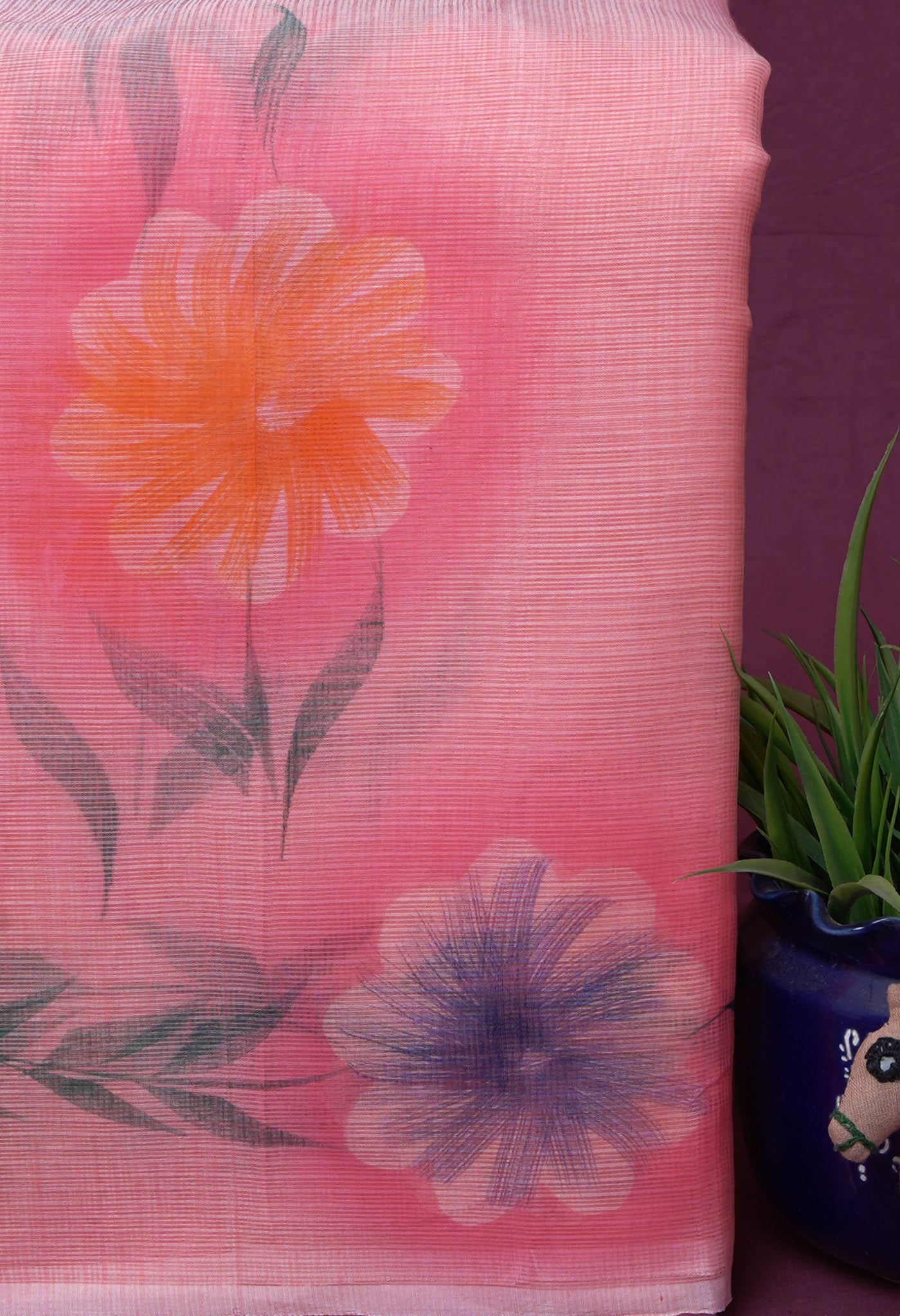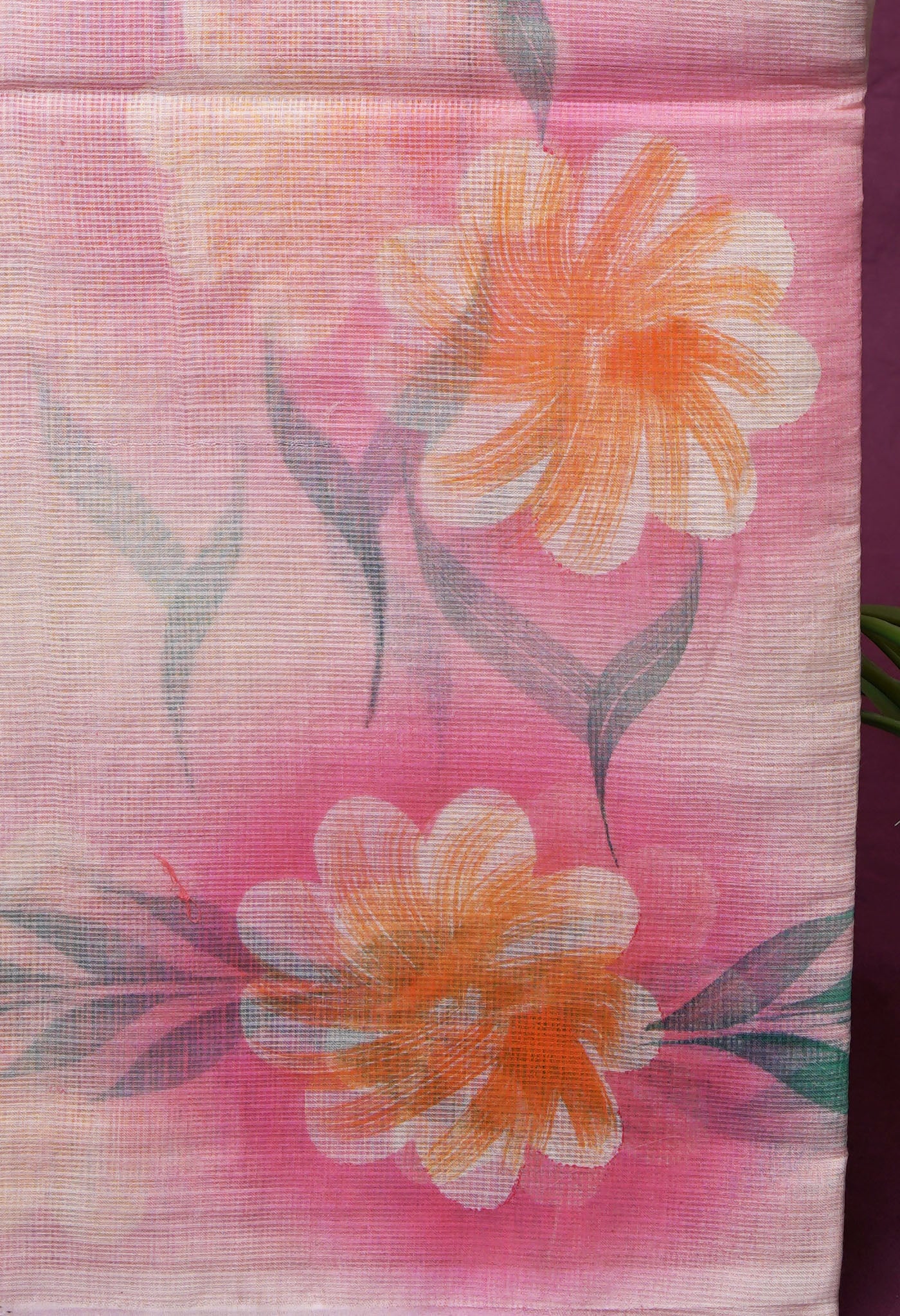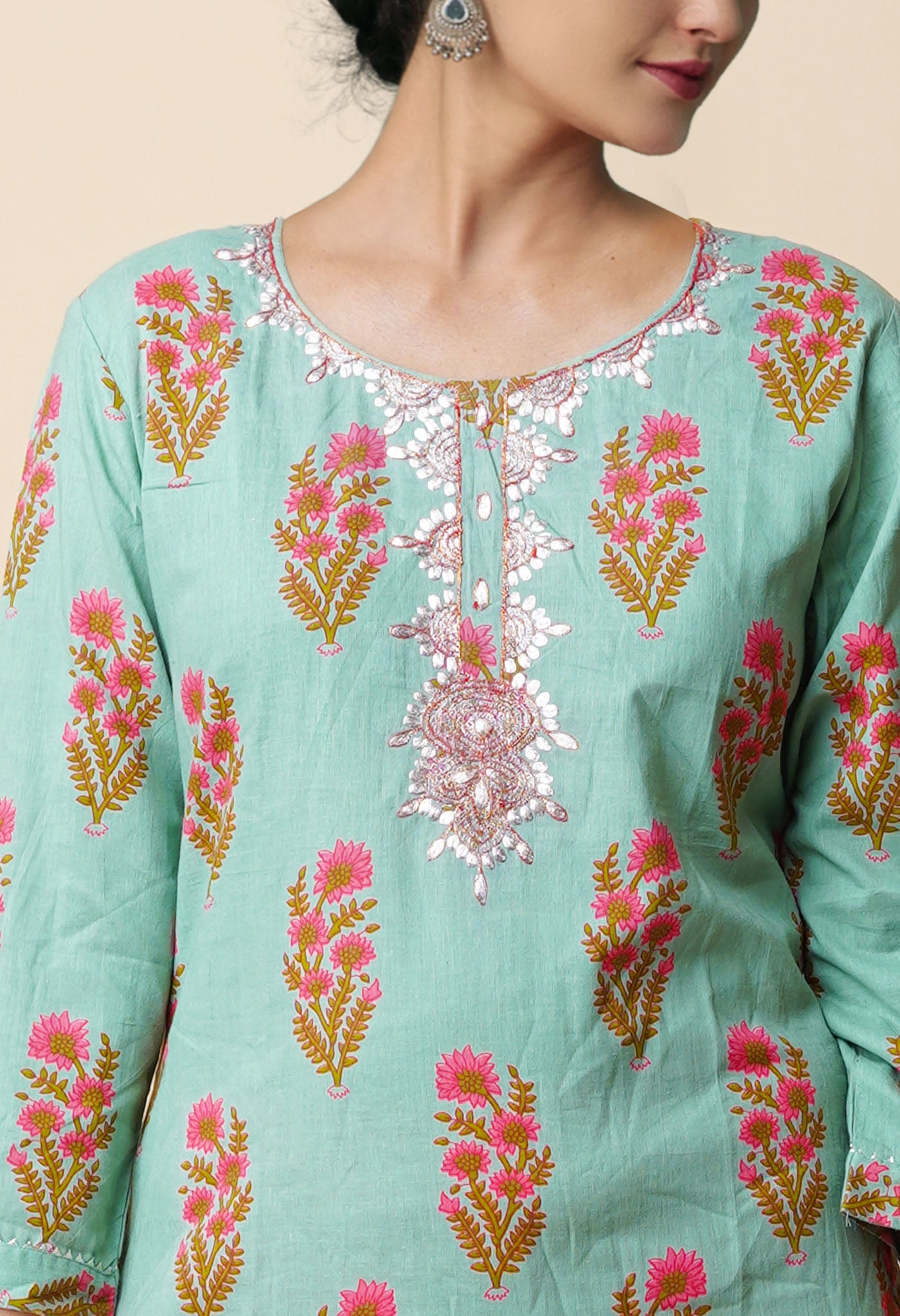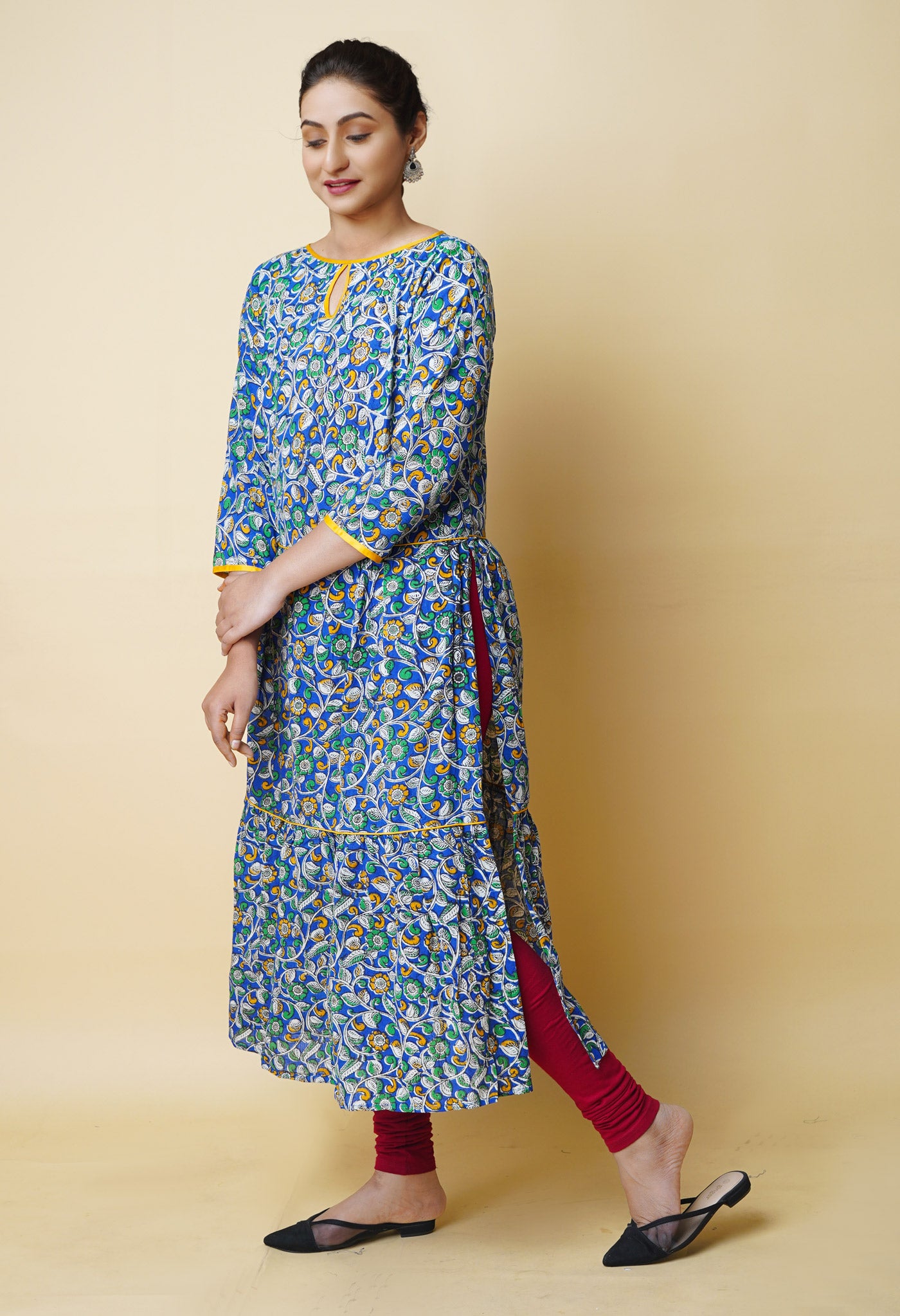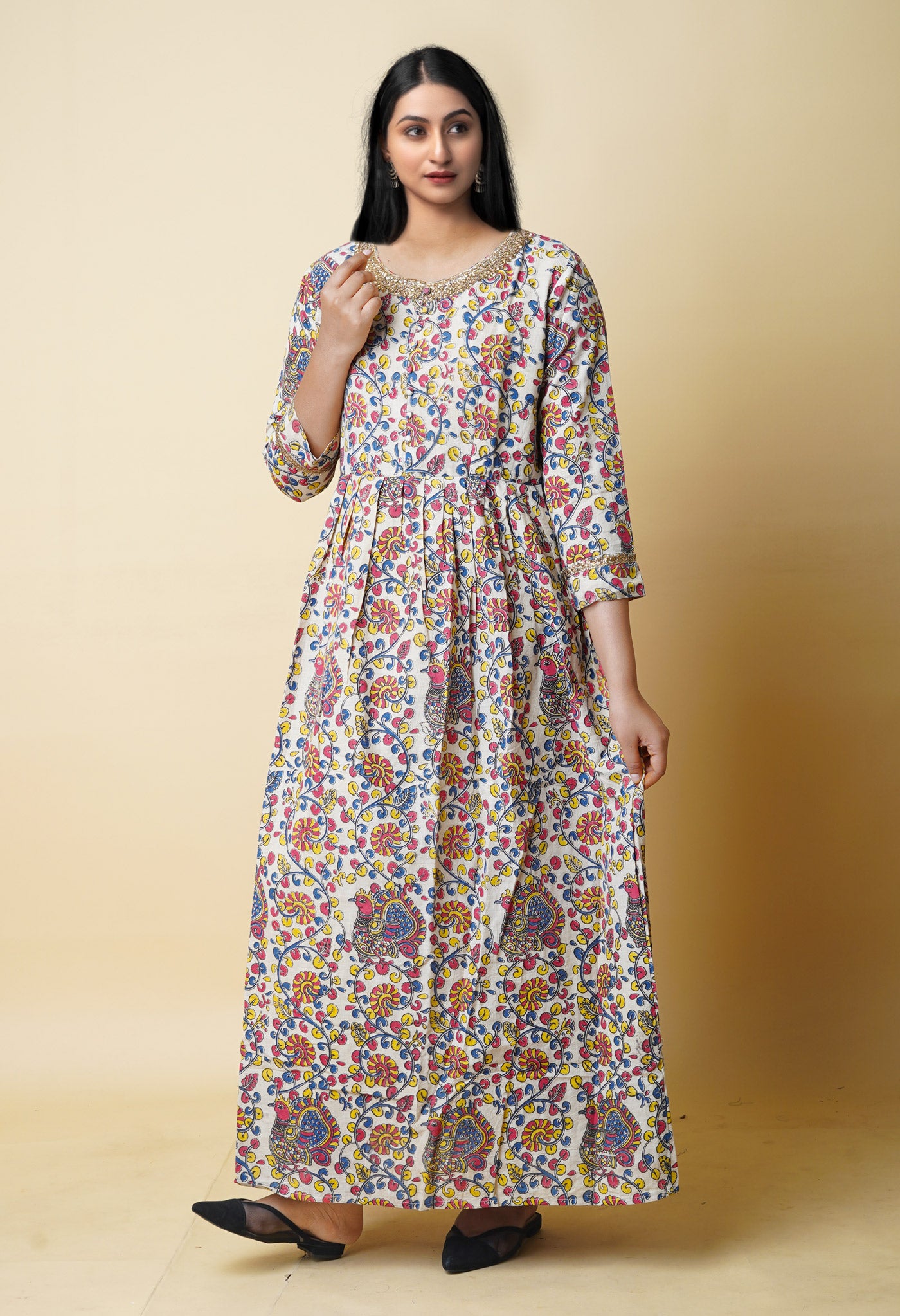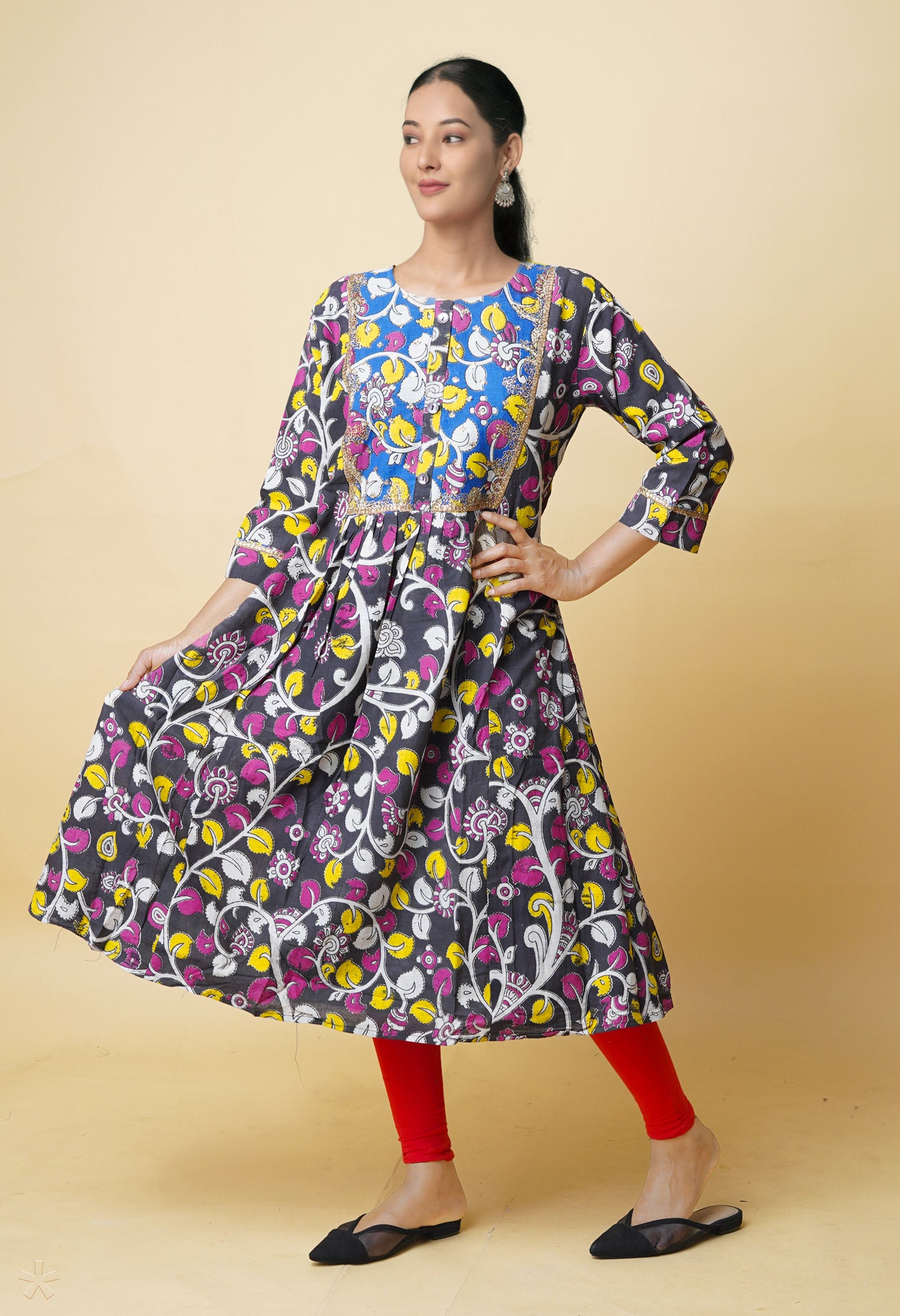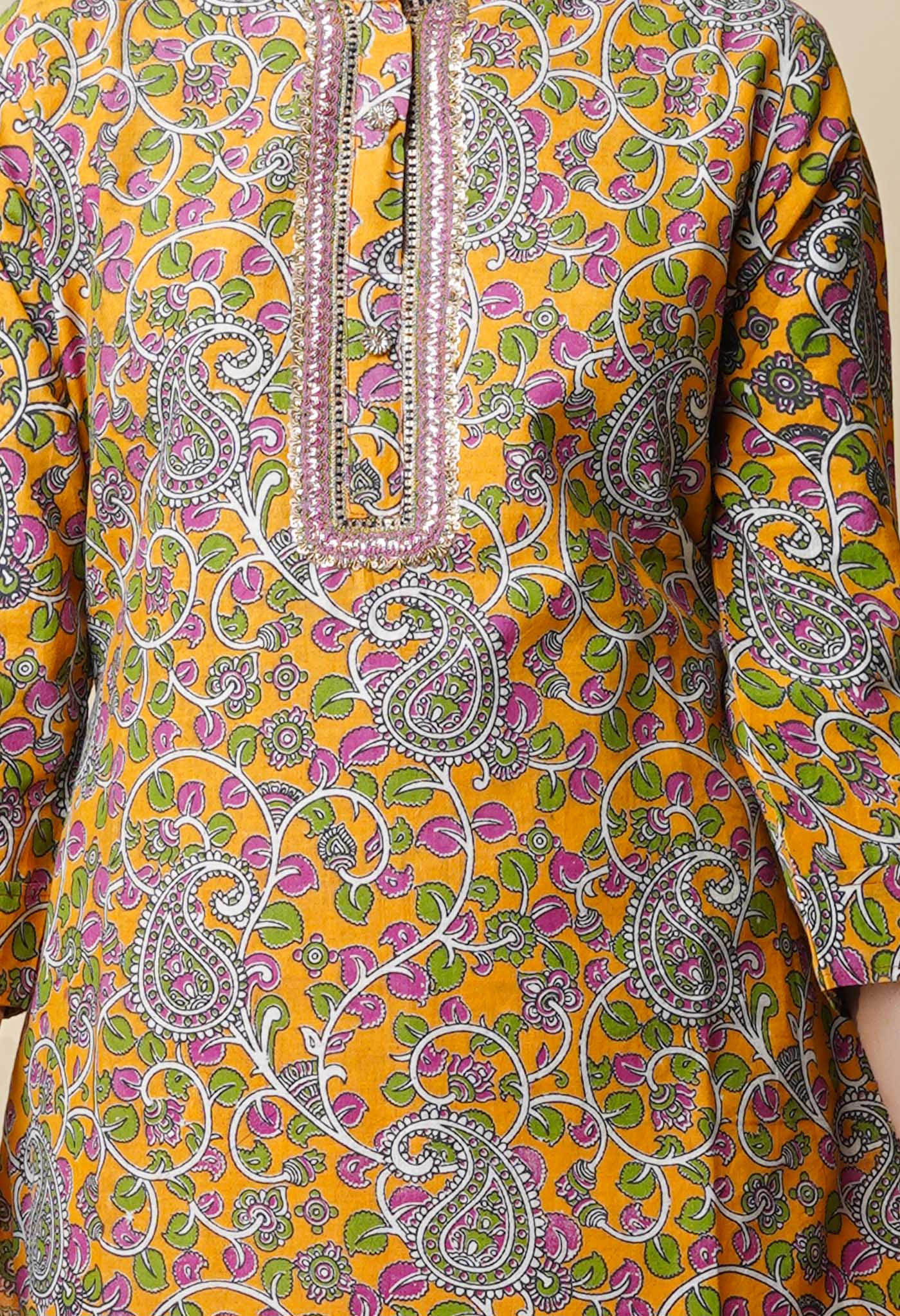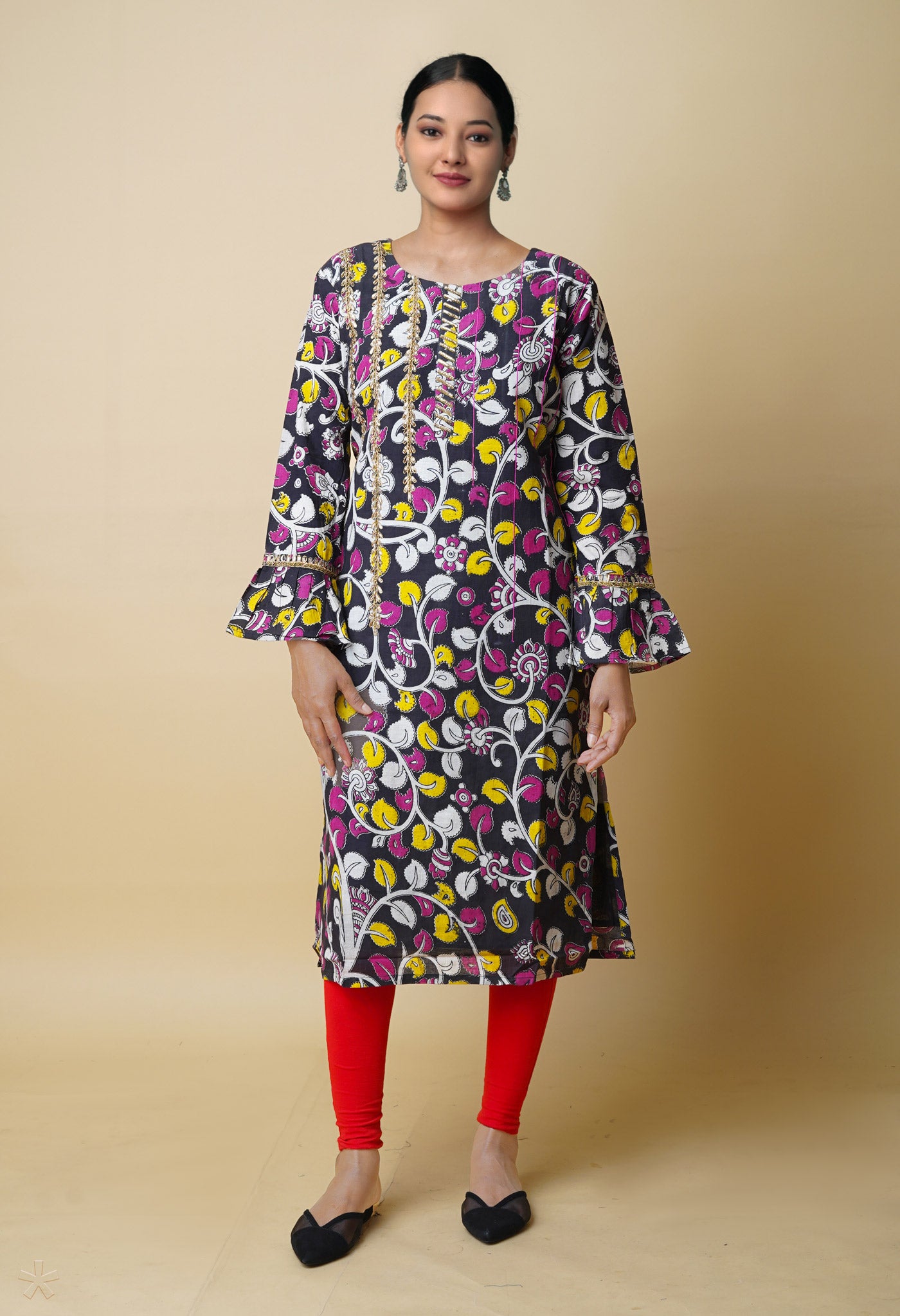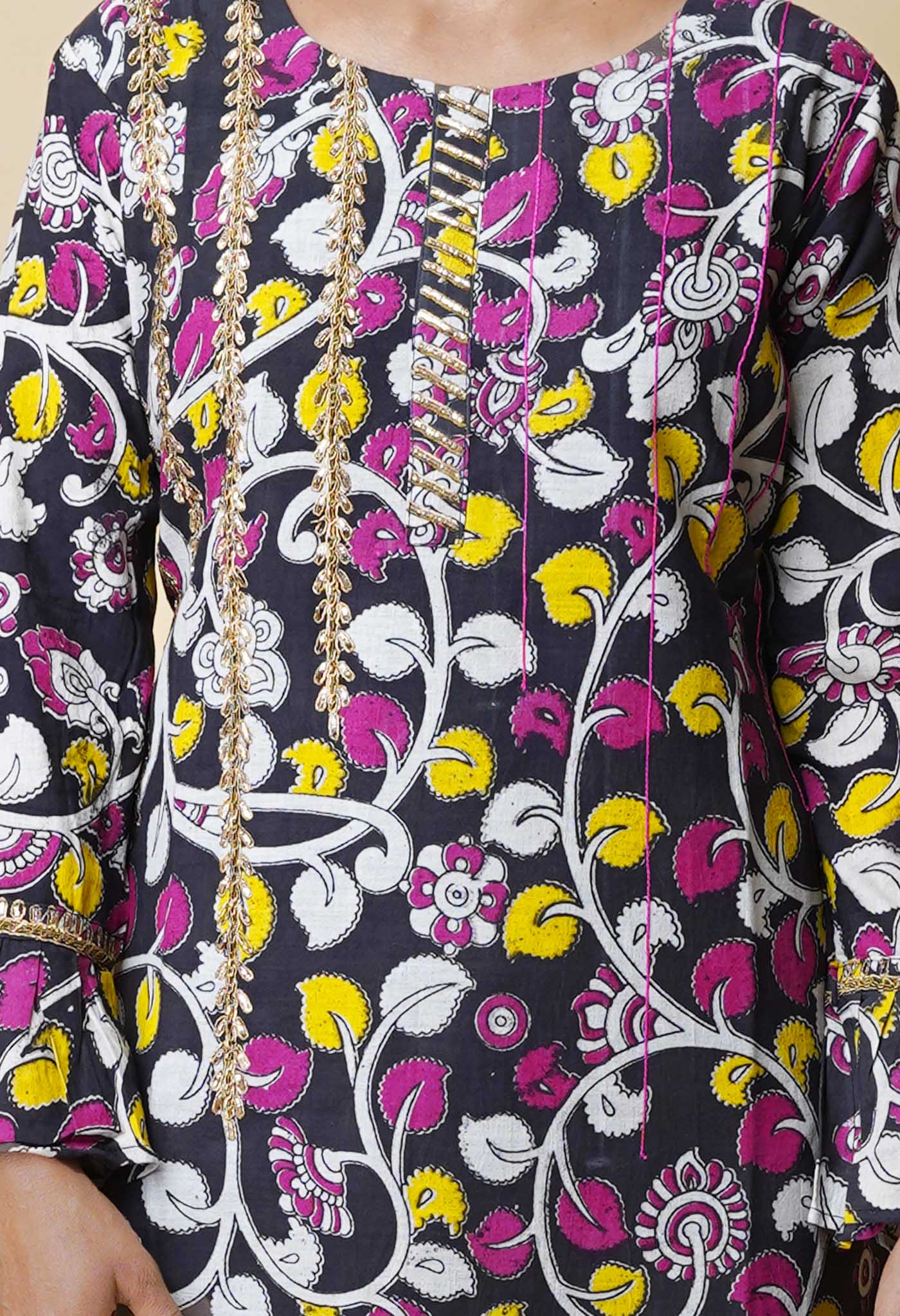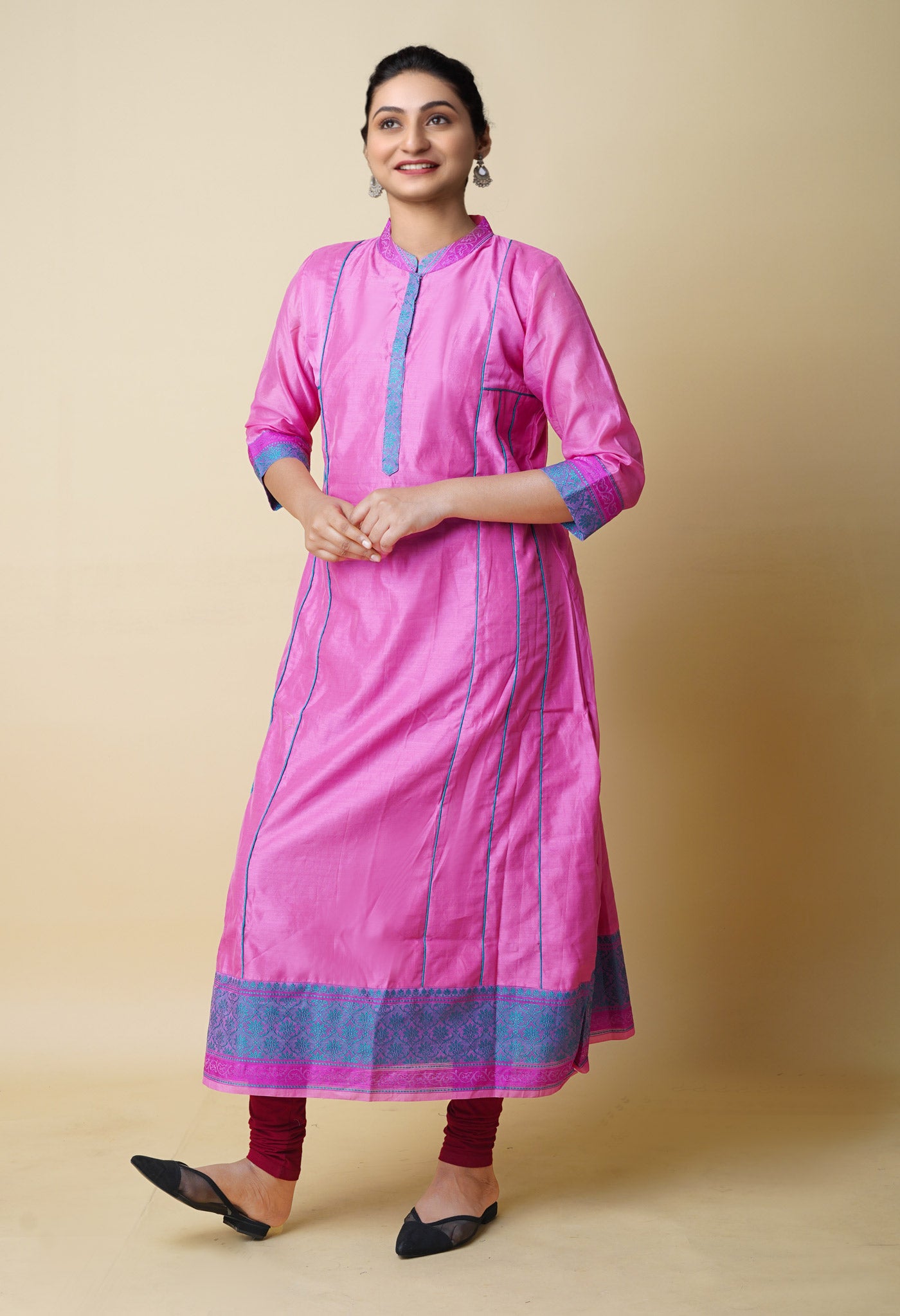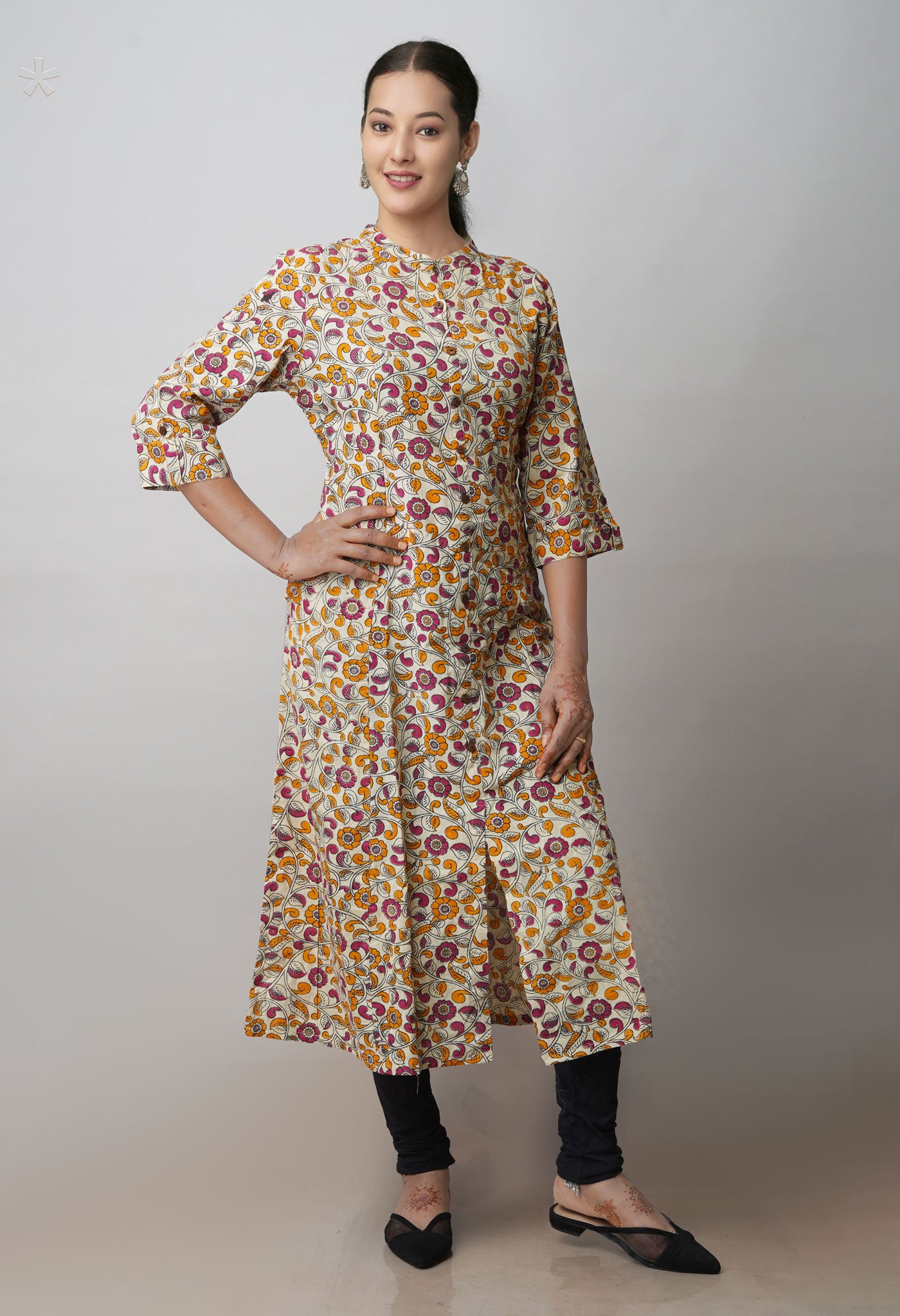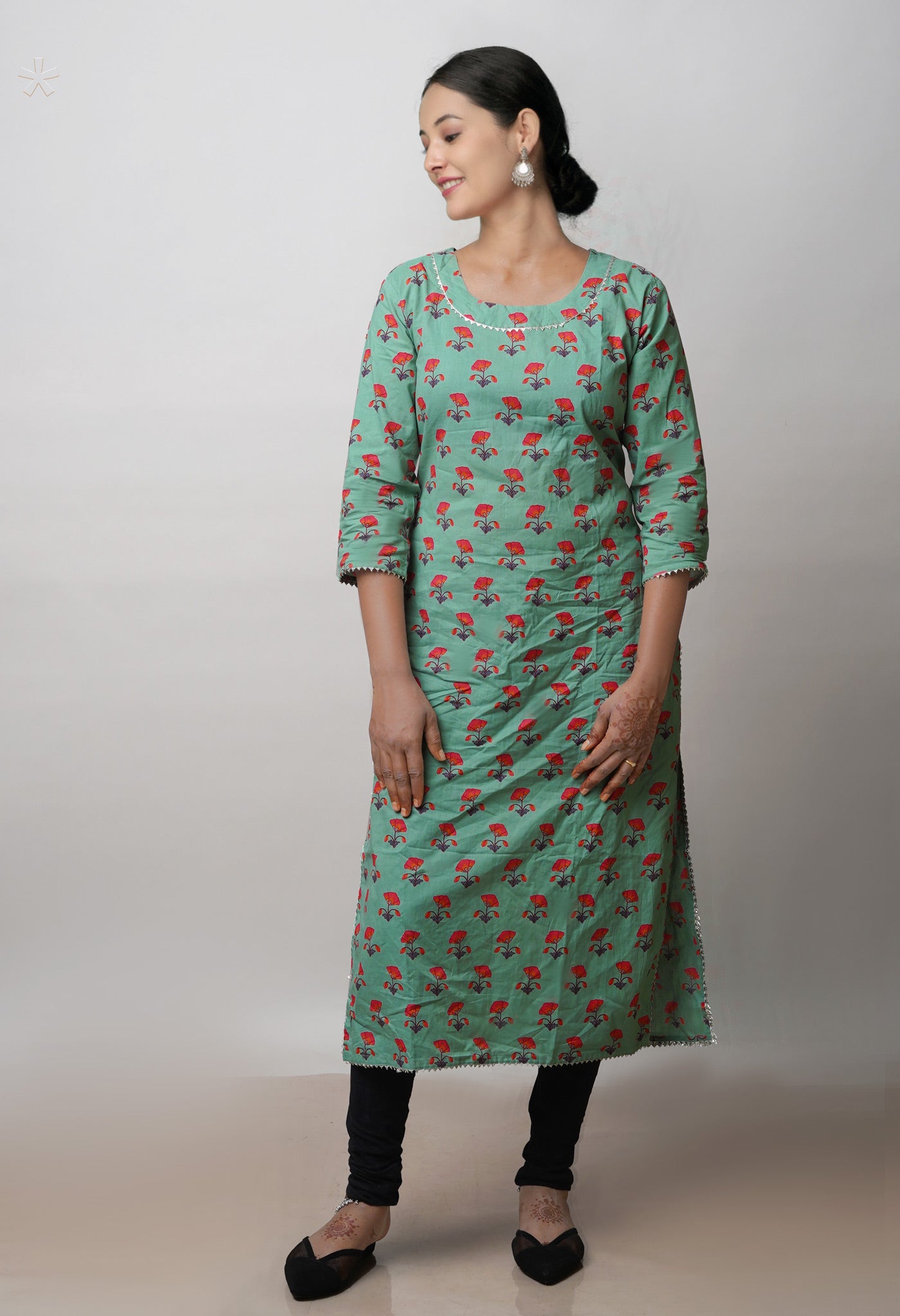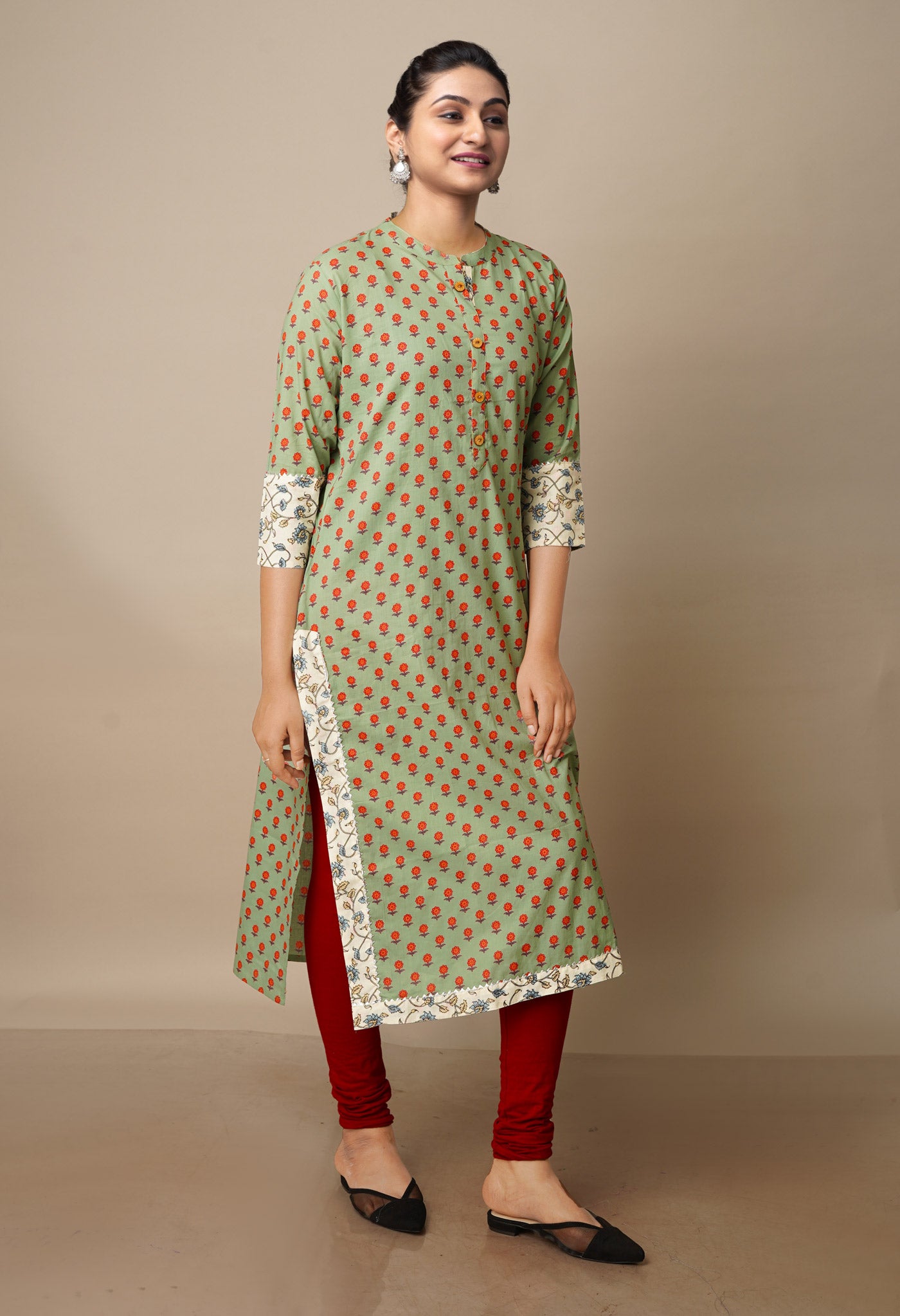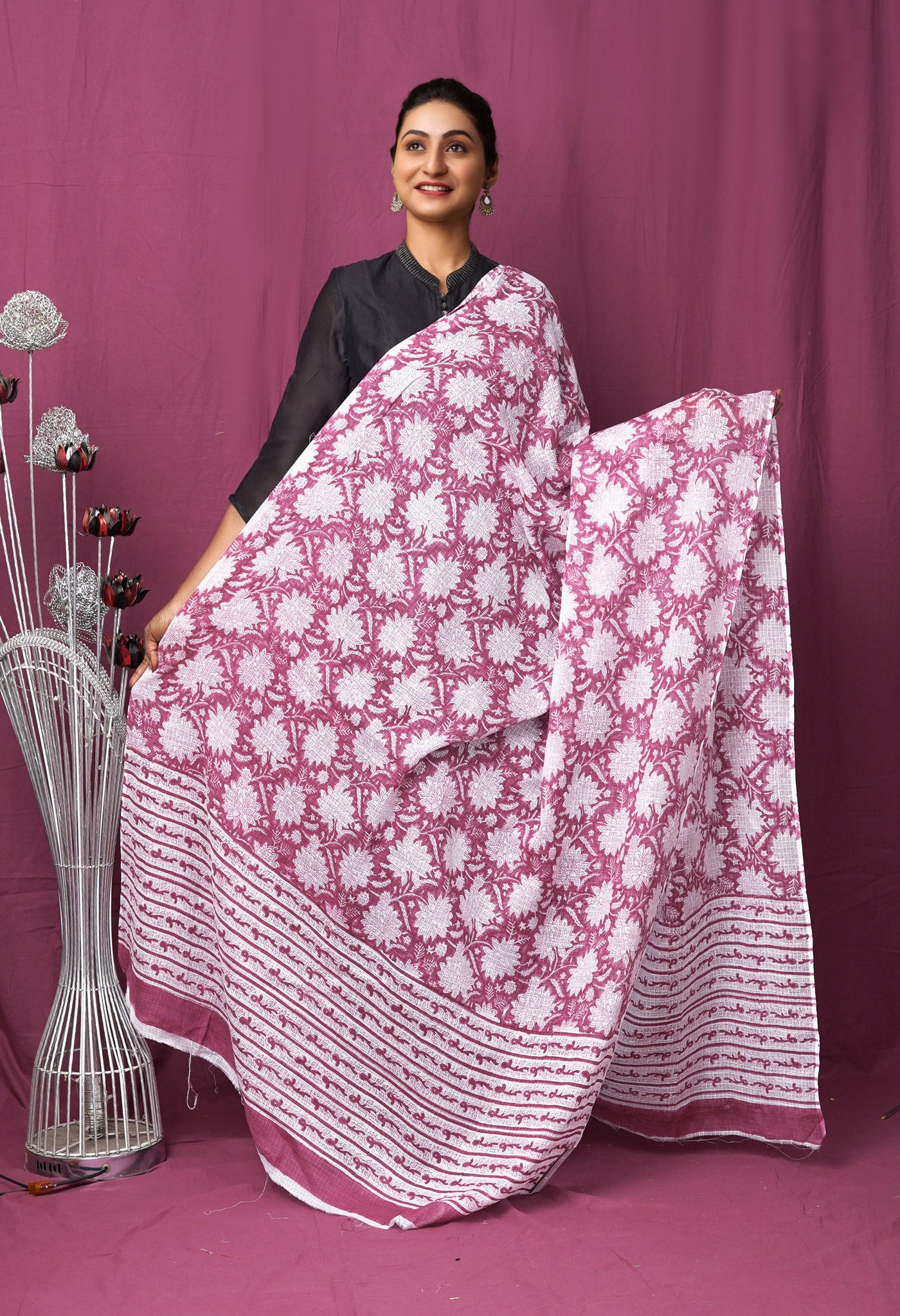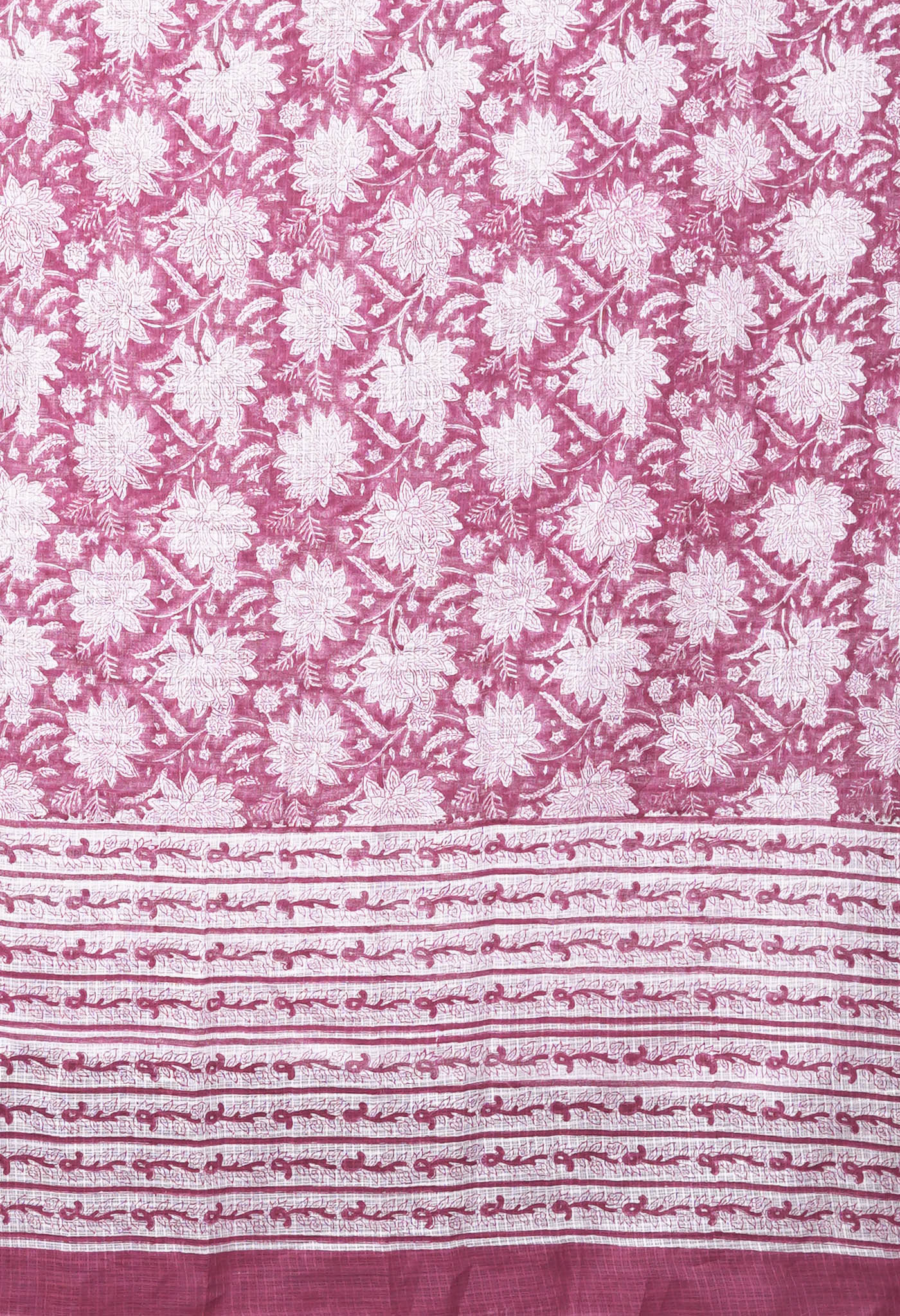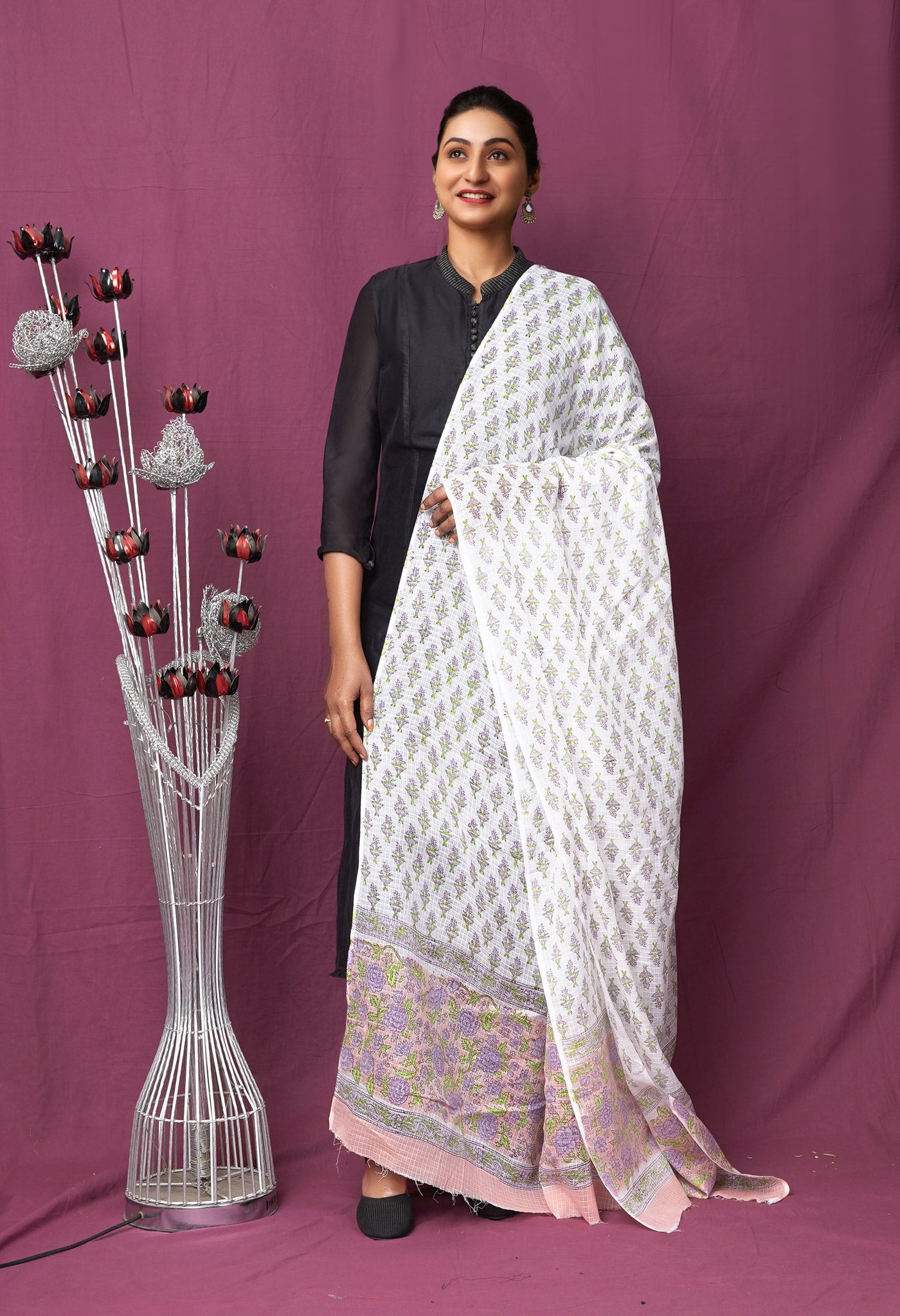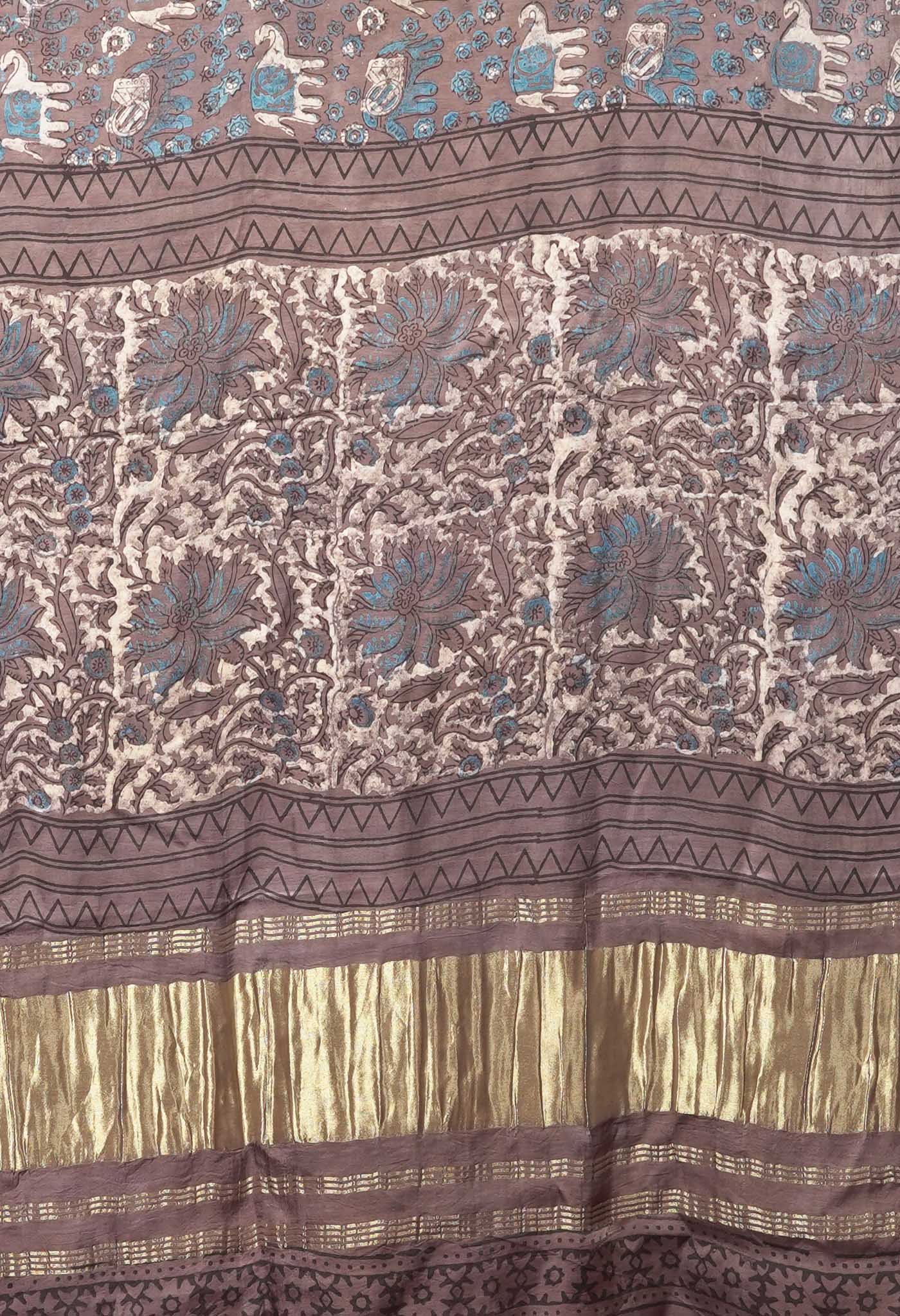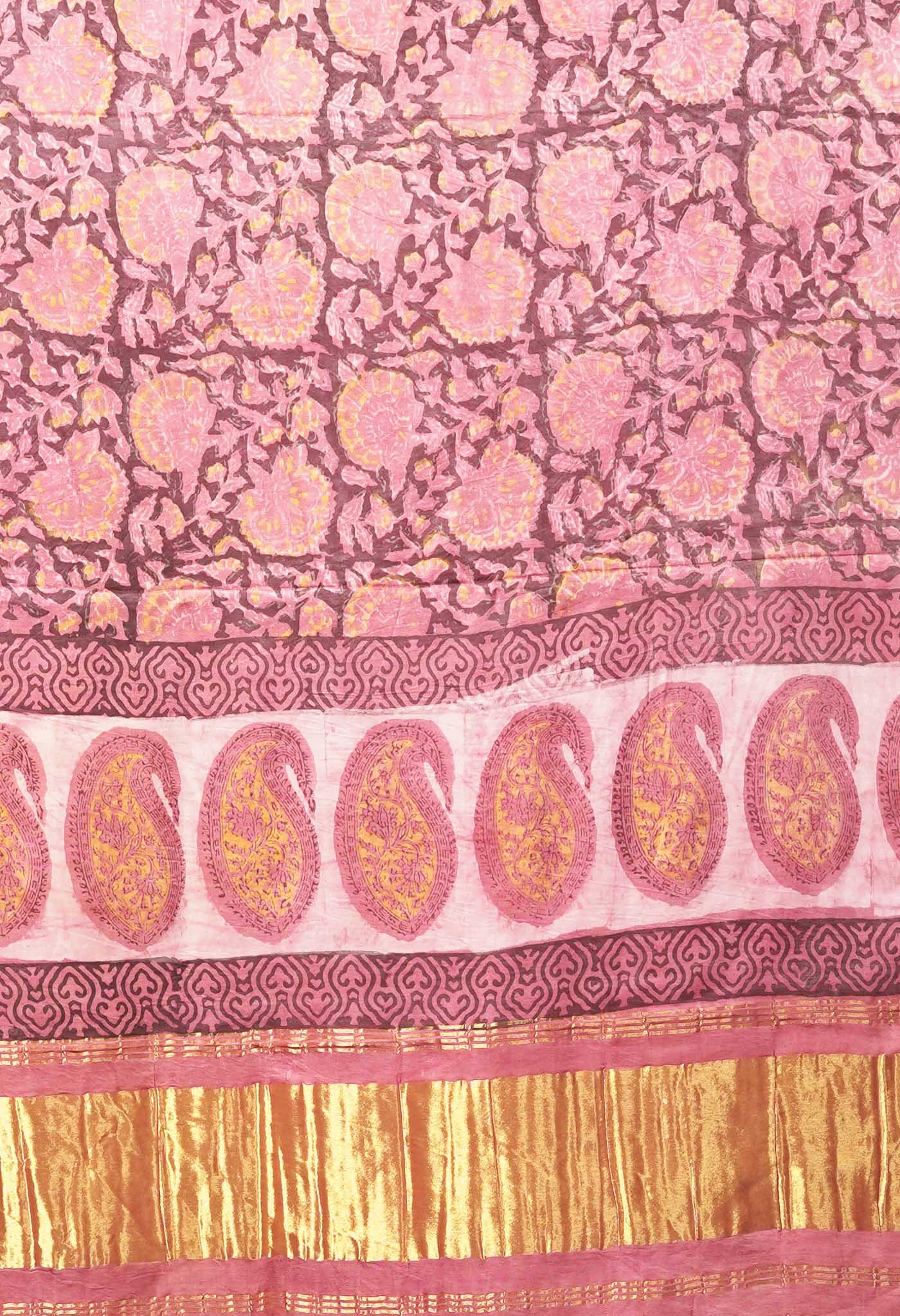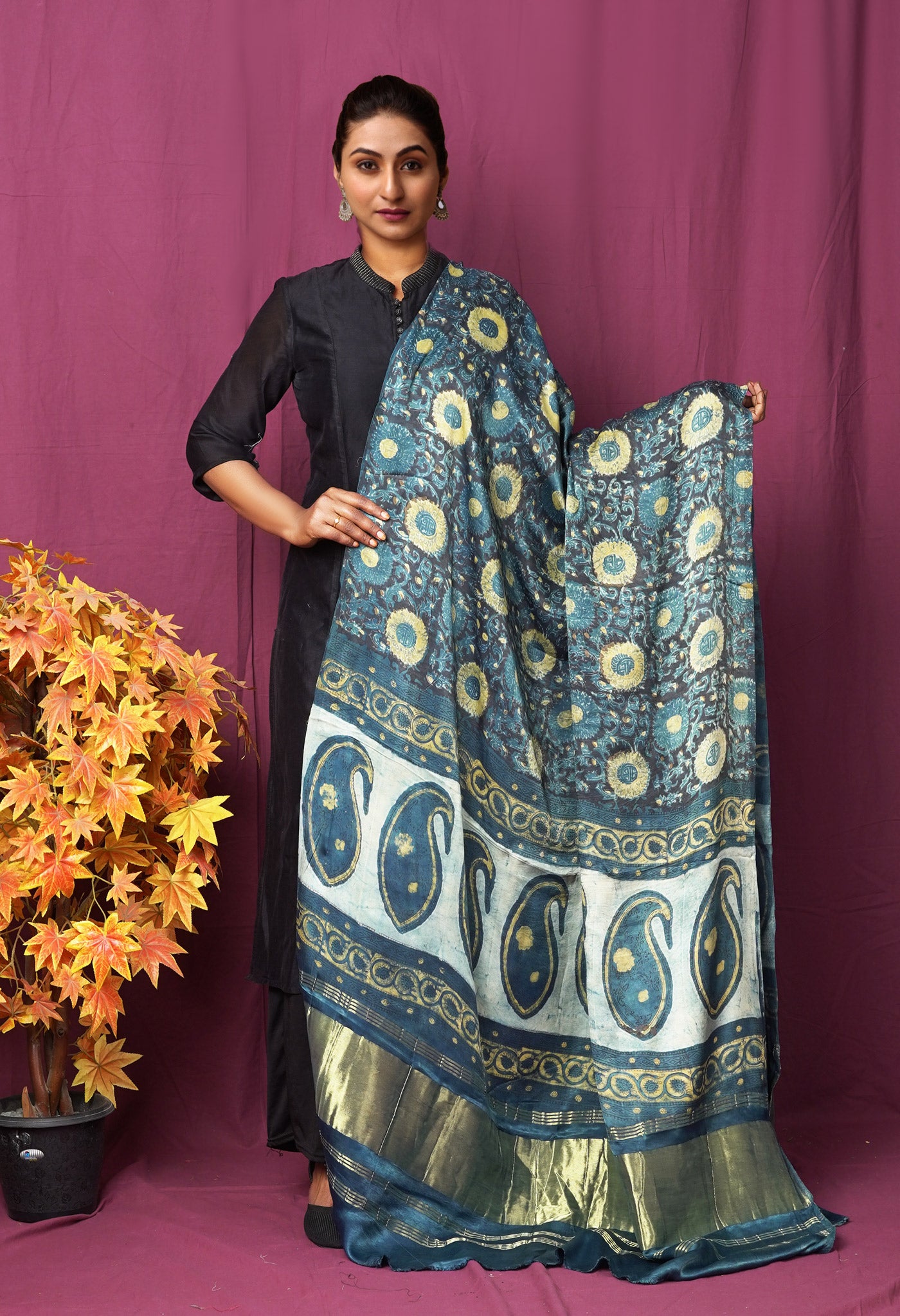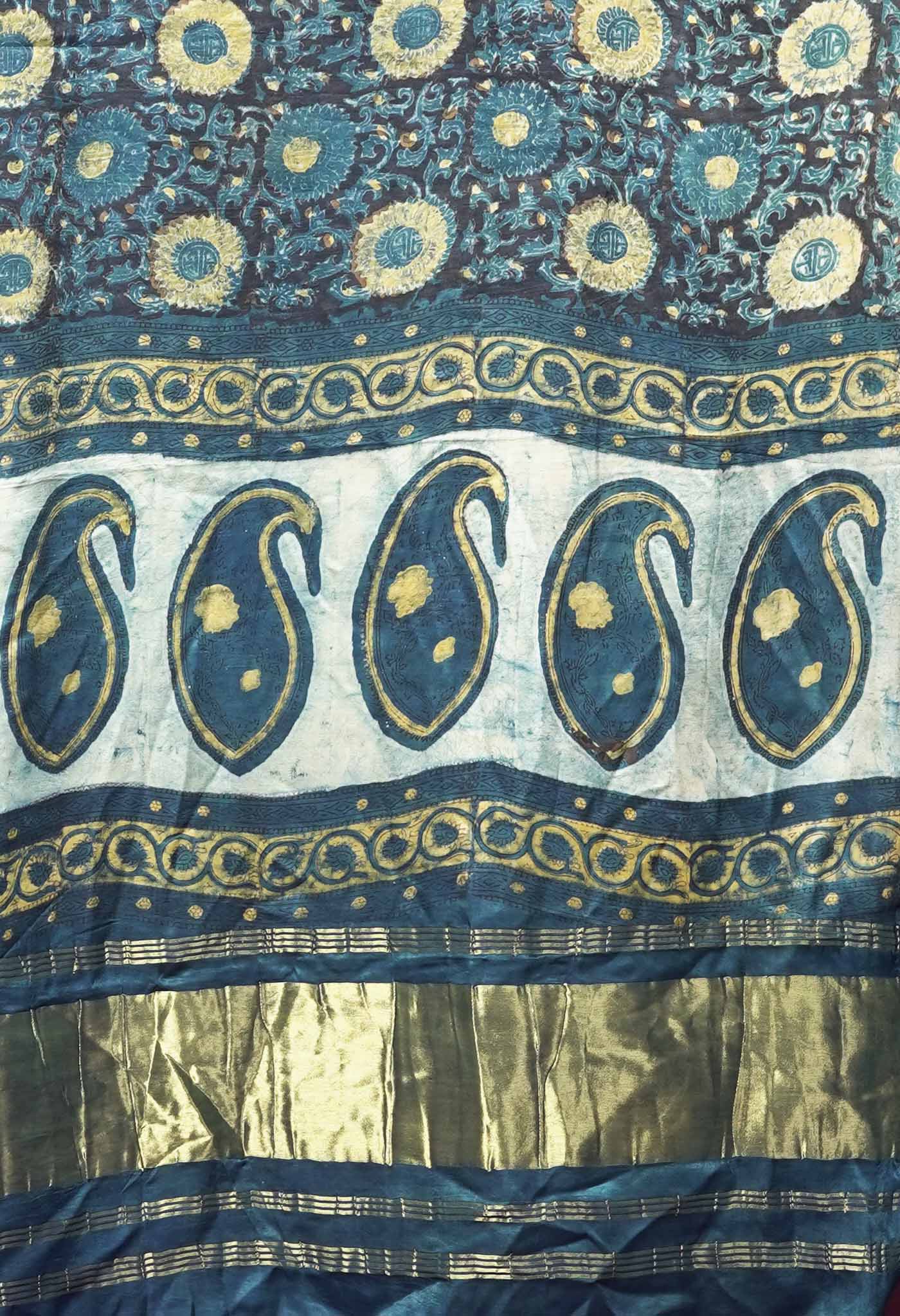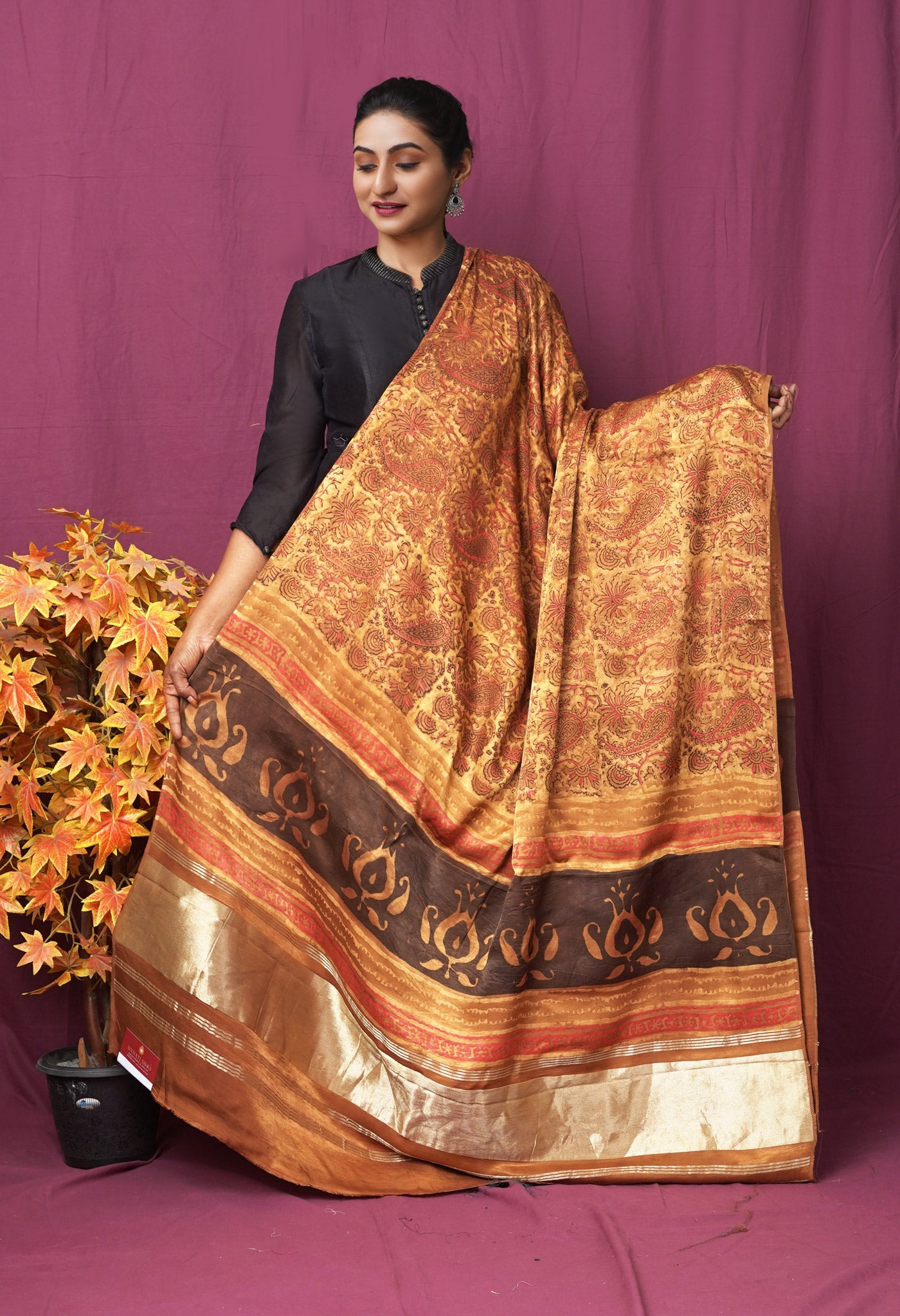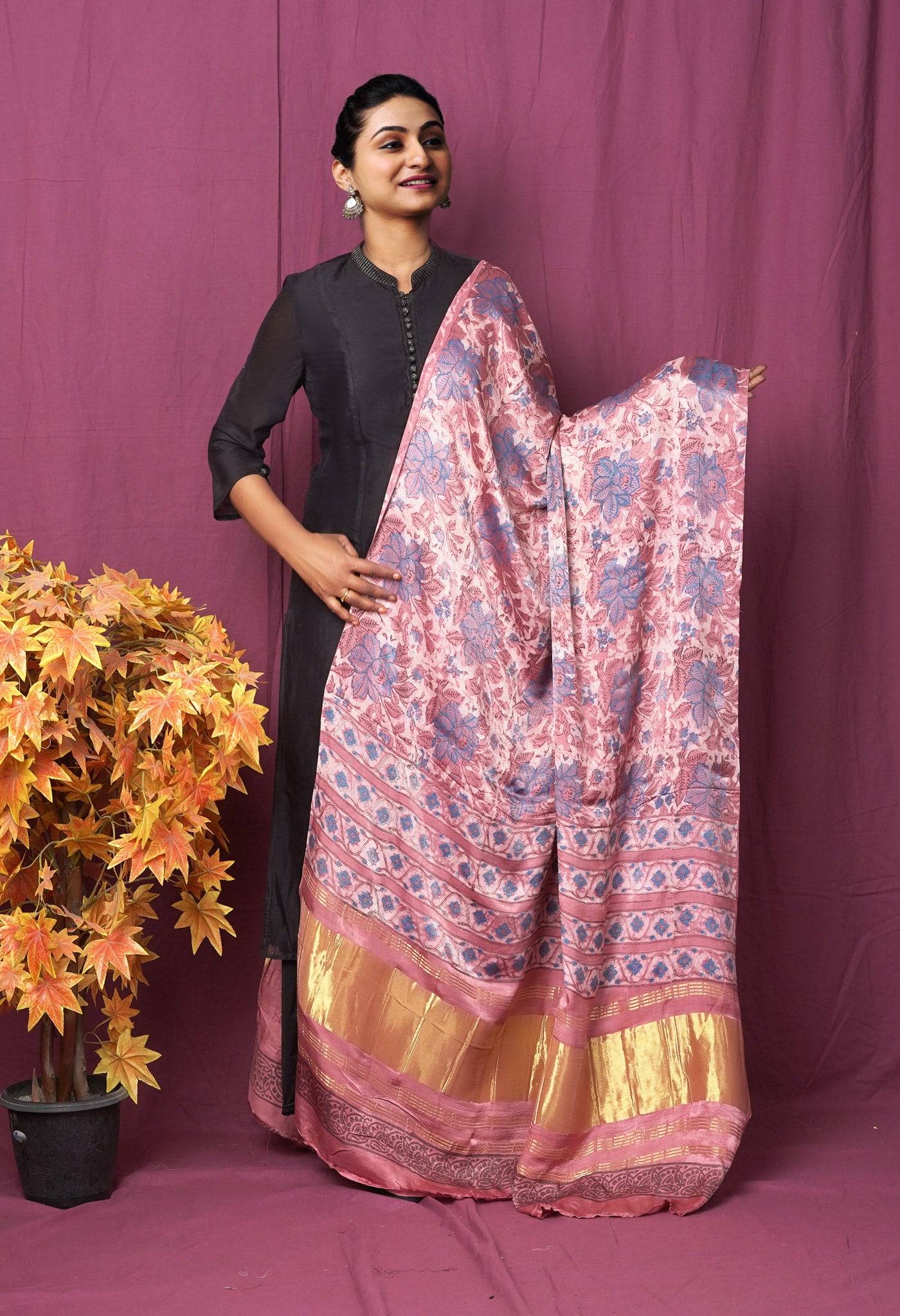
The Baluchari saree of Bengal – Royal silk offering of tradition and taste
The Baluchari Saree, has survived a very rough journey over time, when once it almost saw extinction. Re-vitalized into a vibrant weave form that has captured the imagination of a wide audience, the Baluchari saree has returned to the world of fabrics with a bang.
The Baluchari Saree or Baluchar Saree, is an art weave offering traditionally from Bengal, once worn only by women from the upper class and landlord families, during festive occasions and weddings.
Today it is widely worn in many parts of the country on various occasions, appreciated for its magnificent weave, attractive motifs, brilliant colours and thematic pallus.
The making of the Baluchari saree
It is both fascinating and interesting to observe how the raw material becomes a captivating and treasured silk product that is acknowledged for being one of the finest and worth its price.
The production process or the making of a Baluchari saree can be broken down into several stages, which are carried out systematically, sequentially and in detail.
 Cultivation of cocoons
Cultivation of cocoonsFrom the time that it has been discovered that the silk from the silkworm can be processed to fashion out a beautiful silk fabric, the domestication of the mulberry to obtain its silk yarn to create exclusive fabrics has been going on. The finest silk fibers, and most of what we use today, are produced by "cultivated" silkworms grown in a controlled environment. The worms are fed a diet of mulberry leaves and increase their body size 10,000 times in their short life span. Once the cocoon is spun and before the worm hatches through the silk into a moth, the cocoon is soaked in hot water then unraveled, producing filaments that can be up to a mile long in size. The raw silk is then processed to remove the sericin - the natural "gum" that protects the fibers and causes them to stick to each other as the cocoon was spun. Silk is a protein fiber, similar to wool or to human hair.
Processing of yarns
To make the yarn soft, it is boiled in a solution of soda and soap and then dyed in acid colour, according to the requirement of the saree. The yarn is stretched from both the sides in opposite directions putting some force with both palms. This process is needed to make the yarn crisper.
Preparation of the silk threads to the weave

Once the yarn has been spun into uniform thickness threads the bundles of thread are spread out on the warp and some of it is wrapped around small spindles as weft. Then the weaving is done on handlooms by using two shuttles. The weaving of the Baluchari, has traditionally always been of high counts, thereby creating a soft, smooth fabric that is ready for the additional adornments.
The Pallu or Pallav or end-piece of the Baluchari is its USP that is adorned with thought and care to make it anywhere from ‘noticed’ to ‘sensational’. Making of the motifs for ‘pallavs’ and other part of Baluchari is in itself an intricate process. The design is drawn on a graph paper, it is coloured and punching is done using cards. After punching, these cards are sewed in order and fixed in the jacquard machine. After jacquard loom has been introduced, weaving of a Baluchari saree takes five to six days to get completed. Two weavers work on it on shift basis.
Baluchari thus prepared becomes the sign of aristocracy, the attire of status. Maintenance of quality of Baluchari saree is taken care of precisely, where every stage from cocoons to packaging is done with devotion and diligence.
What makes the Baluchari silk saree special?
Baluchari, the traditional form of silk saree woven that originated in Bishnupur in Bankura district is a designed cloth of 6.0 m of 1.25 m, characterized by artistic designs on the borders of the saree. These designs consist of motifs of different sizes depicting the sculptures made on the historic temples or monuments in India.
The main theme of Bengal sarees-Baluchari sarees depicts mythological stories and folk tales on the pallus of sarees. Some of the designs include Ramayana, Bhagavad Gita and Mahabharata. Motifs are arranged like flowering bunches, animals, architectural scenes, pleasure boat, court scenes of Muslim era. These sarees are perfect suitable for wedding ceremonies, parties, corporate office, festivals, traditional meetings and inaugural functions.
 The practice of weaving of Baluchari type originated in Baluchar of Murshidabad in West Bengal on the patronage of the Nababs of Murshidabad. They tried to portray imageries of Muslim rulers, the court and harems on the spread of these sarees. During the 8th century the designs were biased by Persian miniatures.
The practice of weaving of Baluchari type originated in Baluchar of Murshidabad in West Bengal on the patronage of the Nababs of Murshidabad. They tried to portray imageries of Muslim rulers, the court and harems on the spread of these sarees. During the 8th century the designs were biased by Persian miniatures.
Baluchar saris often have depictions from the scenes of the epics, Mahabharat and Ramayana. During the Mughal and British eras, they had a square design in the pallu with a feather motif in them. It would take two craftsmen to work for almost a week to produce one sari. The main material used is silk and the sari is polished after weaving.
Current day Baluchari Silks follow the designs of designer Sri Das who introduced paintings of the Ajanta Ellora caves as designs on the Baluchari sarees in Bankura. Painting and sculptures of various famous temples and historical places are used for designs for weaving on the Baluchari saree. The border of a saree even speaks of the story of an epic.
Jacquard looms are used in which intricate designs are coded and punched on long chains of jacquard cards. As these punched cards control the movement of the warp on the loom, designs come up on the saree with greater ease.
Some difficulties faced in the past
After the revival of the Baluchari , initially there were some difficulties.
The process was labour-intensive and the designs very limited.
Testing of color combinations could not be done so limited colors only were presented to the customers.
Defects could not be detected in the initial stages that sometimes led to the down pricing or rejection of the product.
The same jacquard card deck was used a number of times, so designs were limited and designing new ones took time and effort with a fresh lot of cards to be punched. This increased the cost of design and thereby the cost of the saree.
Designs started becoming simpler since the limitations in creating tediously through punched cards, was discouraging the younger lot.
It was only after the IT and CAD professionals of IIT Kharagpur that was in the region came to their help that things changed dramatically. Software developed allowed for designing, testing, that automatically saved time and effort.
What used to take two to three weeks was achieved in three to five days.
[/vc_column_text][/vc_column][/vc_row][vc_row][vc_column][vc_video link="https://www.youtube.com/watch?v=AUFgTyi7Vkc"][/vc_column][/vc_row][vc_row][vc_column][vc_column_text]
The Organic Baluchari
 There has been experimentation with the Baluchari going oganic. A touch of eco-friendliness in terms of the used yarns & colors, cotton Kapas is spun with fibres of banana plants and bamboo shoots and the dyes are extracts of fruits, flowers, leaves, and vegetables such as pomegranate, jamun, neem fruits and leaves, basil leaves, turmeric, marigold flowers, mangoes and others. The organic baluchari cotton sarees were displayed in the sari fair organised by Rang Mahal, a forum of weavers from Nadia district in West Bengal.
There has been experimentation with the Baluchari going oganic. A touch of eco-friendliness in terms of the used yarns & colors, cotton Kapas is spun with fibres of banana plants and bamboo shoots and the dyes are extracts of fruits, flowers, leaves, and vegetables such as pomegranate, jamun, neem fruits and leaves, basil leaves, turmeric, marigold flowers, mangoes and others. The organic baluchari cotton sarees were displayed in the sari fair organised by Rang Mahal, a forum of weavers from Nadia district in West Bengal.
The Baluchari saree was one of the award winners for the main weaving styles amongst thirty four National Awards for the years 2009 & 2010 present by the Hon. President Pranab Mukherjee.
The Unnati line-up of Baluchari Silks,
Baluchari Sarees with silk brocade designs suited to the base colour, are decorated with attractive motifs. The appeal of the Baluchari lies in its colour harmony and not in contrast, of the pattern colours with the colour of the body fabric. Preferred Colours are red, green, yellow, blue and their shades.
Mythological stories, scenes from the epics, Ramayana and Mahabharata and architecture found on the walls of the terra cotta temples that the Malla rulers had built in present day Bengal, are central subjects that generally adorn the Pallav or Pallu and heighten the appeal of these traditional weaves.
Fusion versions having floral motifs on the body, light colourful borders and thematic presentation in ethnic art on the pallu have been rewarded with applause from the market.
[/vc_column_text][/vc_column][/vc_row][vc_row][vc_column][vc_gallery type="image_grid" images="13392,13398,13397,13391,13390,13393,13389,13388,13387" img_size="medium"][/vc_column][/vc_row][vc_row][vc_column][vc_column_text]
While incorporations are inclusive of modern tastes, the heirloom value of traditional Baluchari has not been sacrificed even marginally. The Baluchari Silks still continue to be woven as before, remaining the pride of Bengal, a treasure that is a part of India’s heritage.
[/vc_column_text][/vc_column][/vc_row][vc_row][vc_column][vc_btn title="Online Shopping for Baluchari Sarees" shape="round" color="vista-blue" link="url:http%3A%2F%2Fwww.unnatisilks.com%2Fsarees-online%2Fby-work-sarees%2Fbaluchari-sarees.html||target:%20_blank"][/vc_column][/vc_row]


